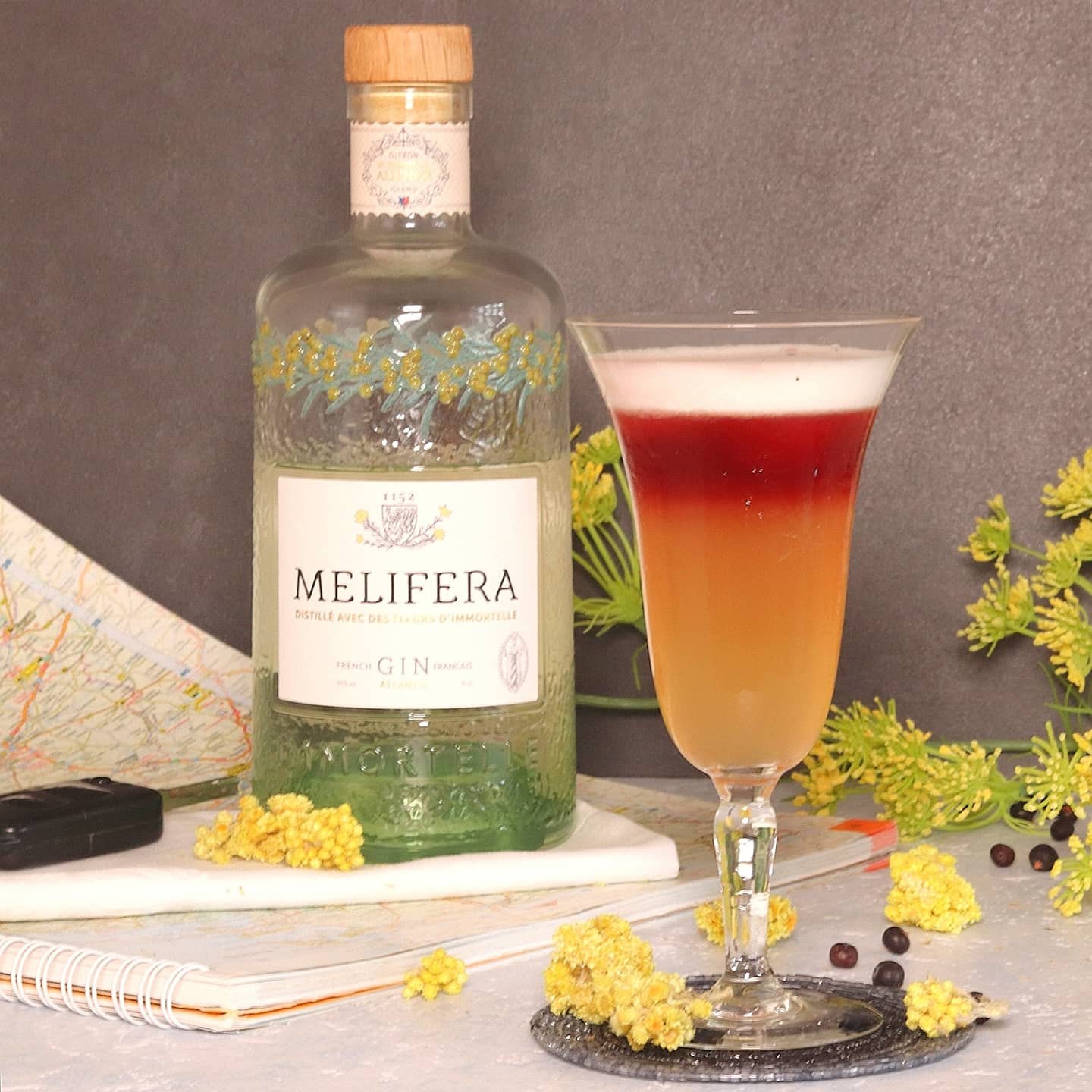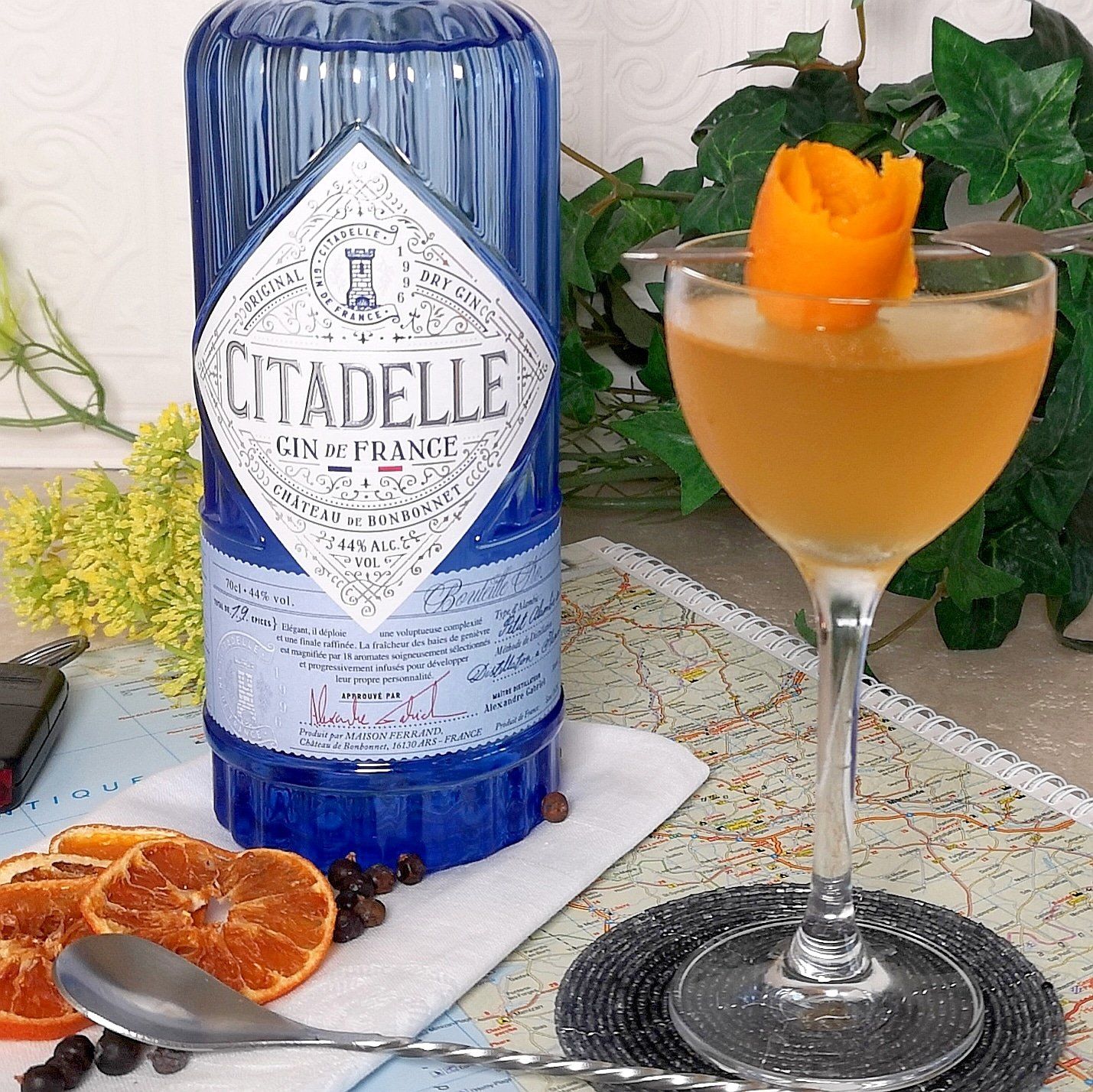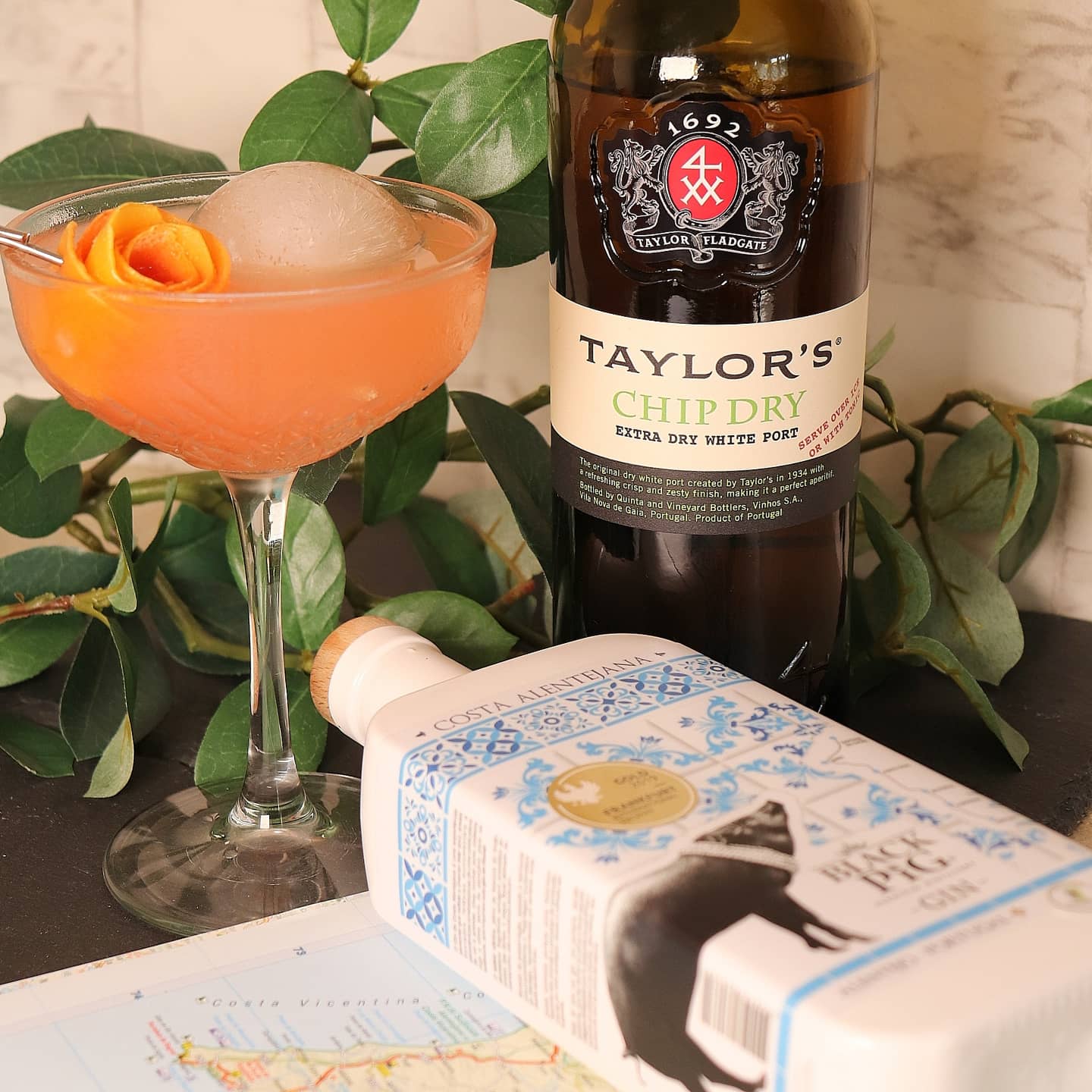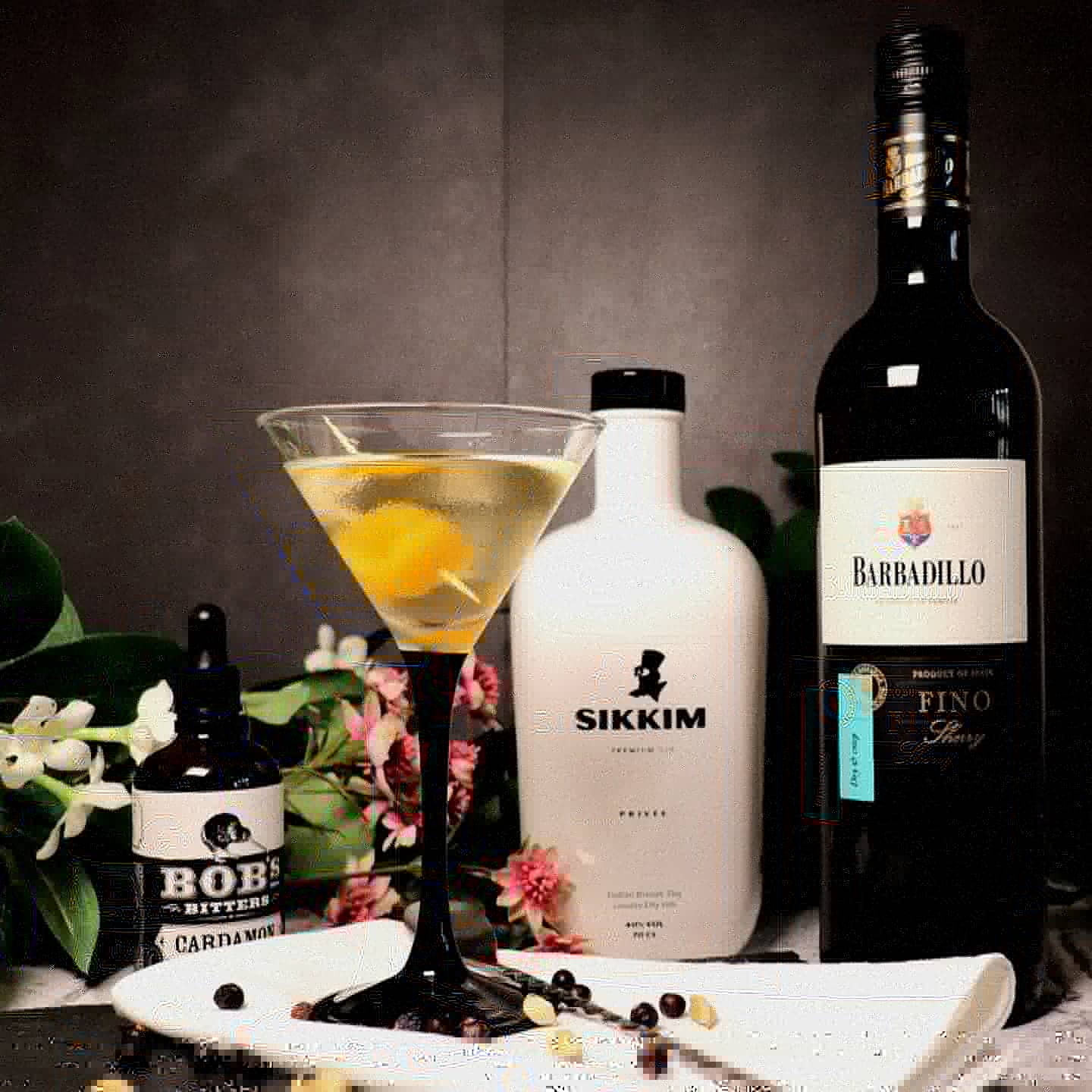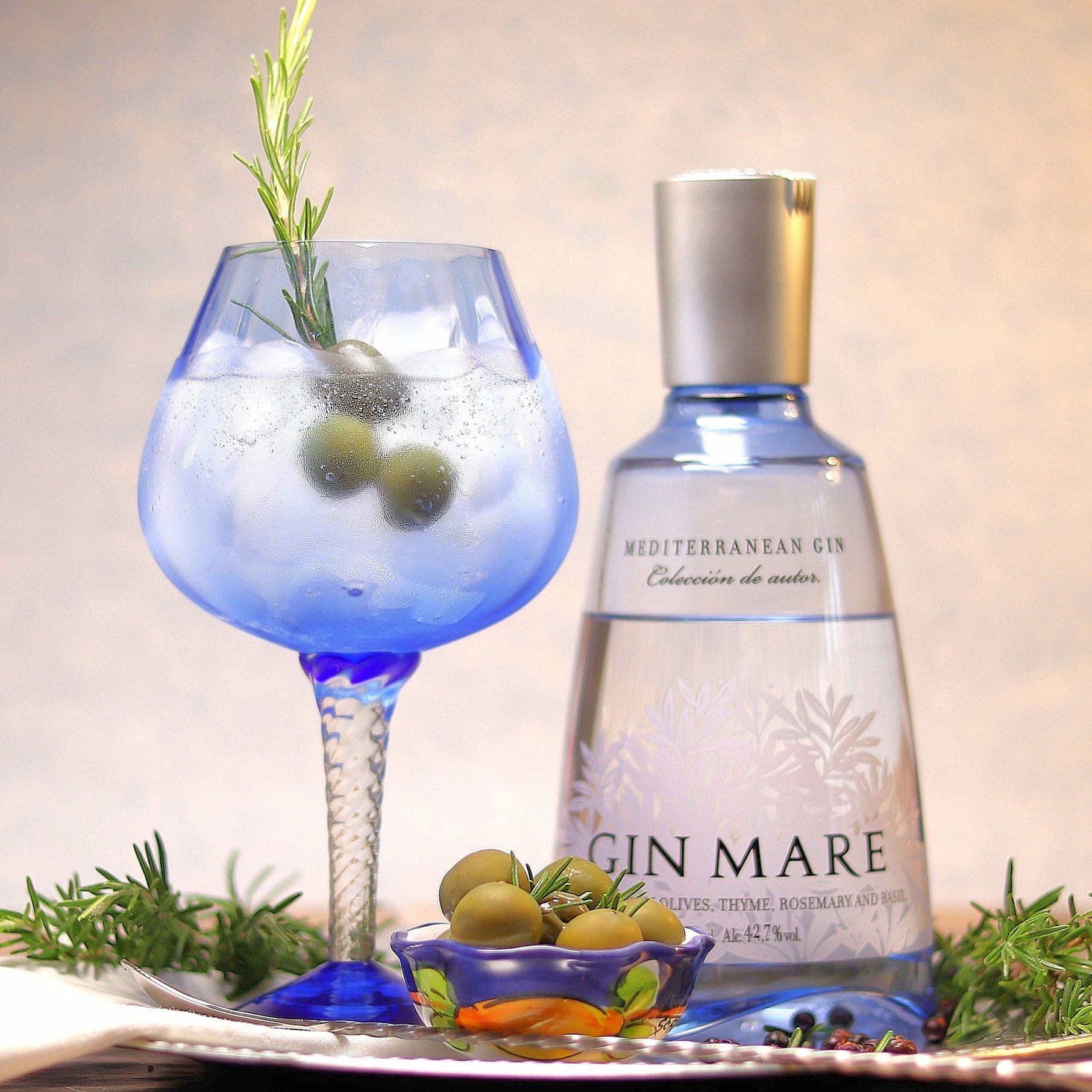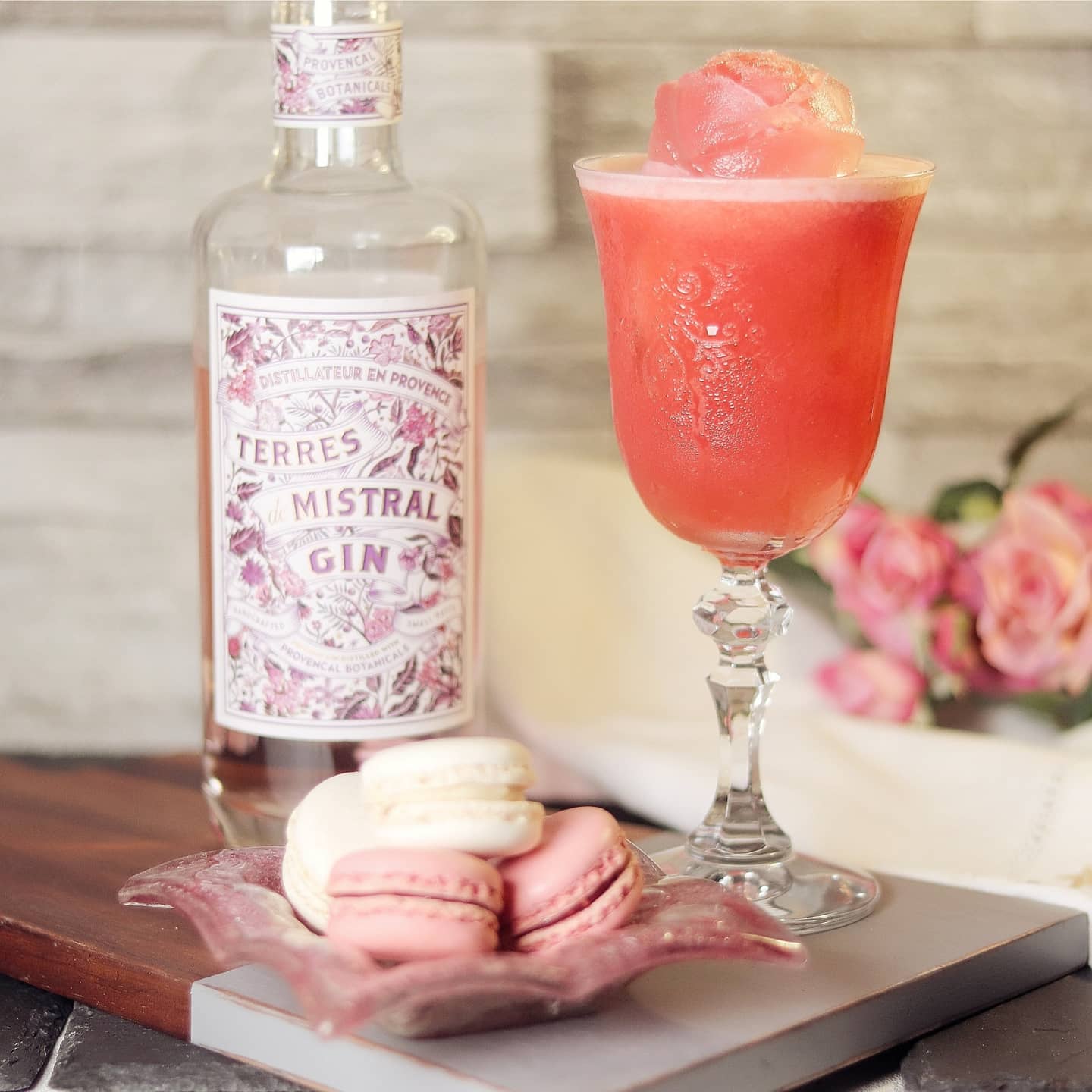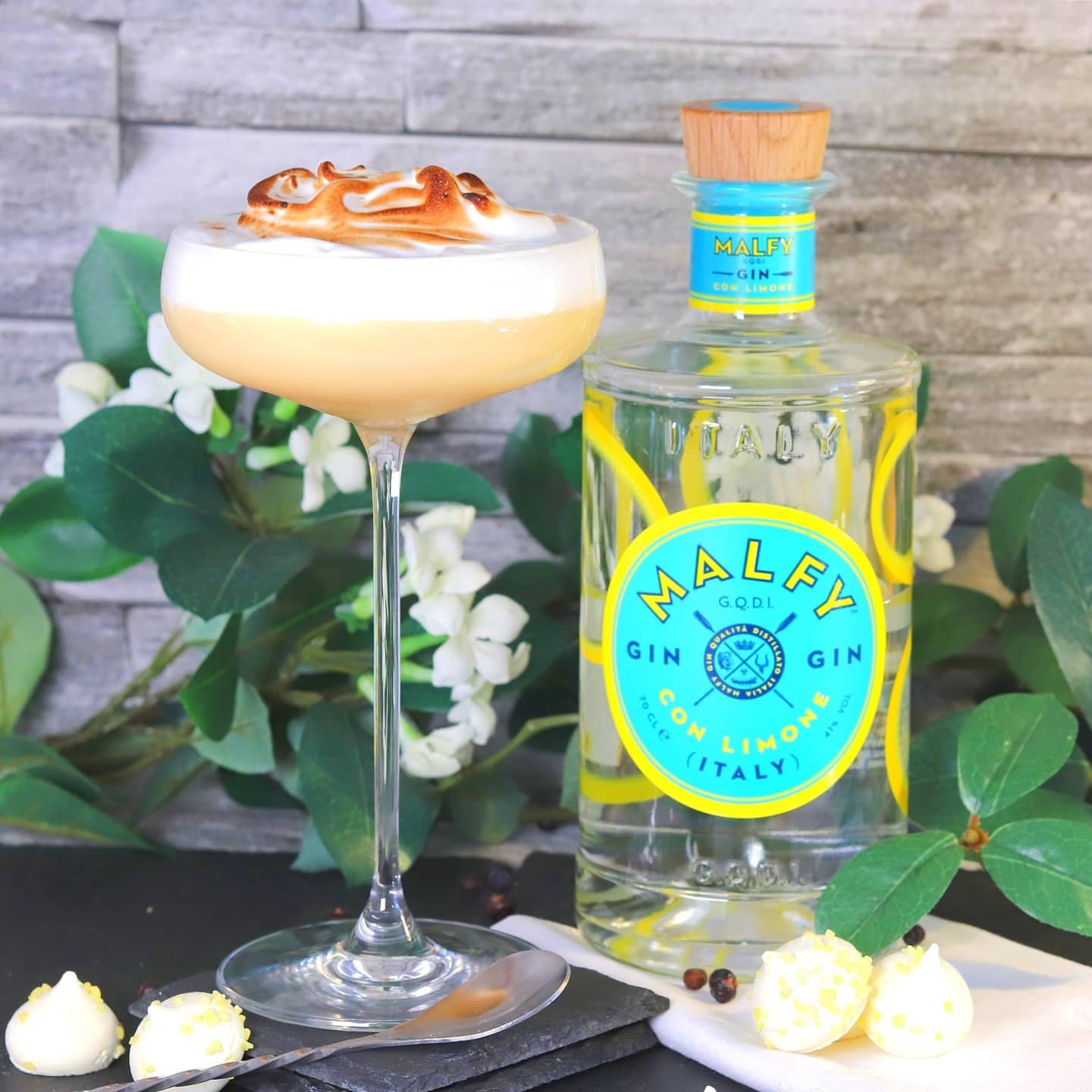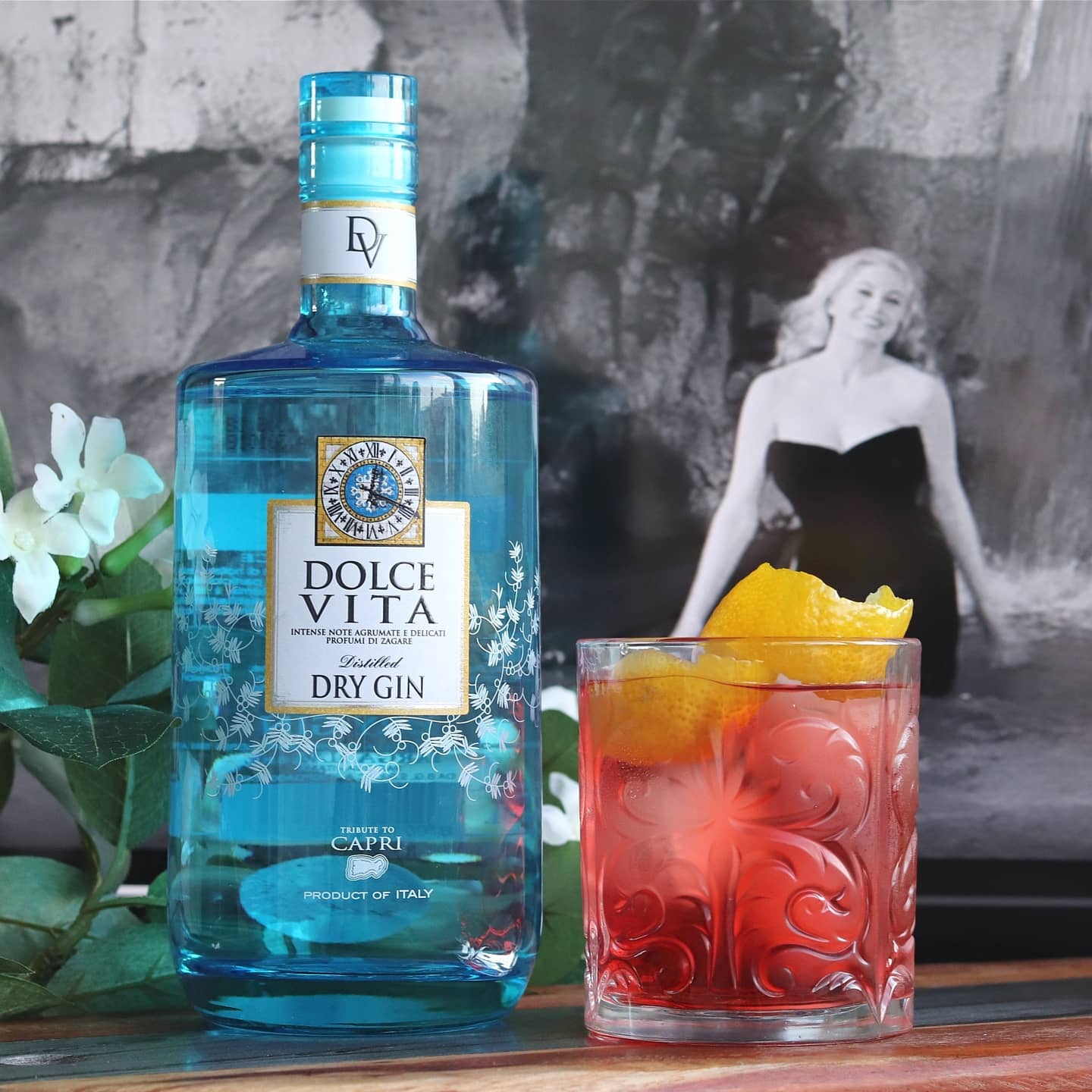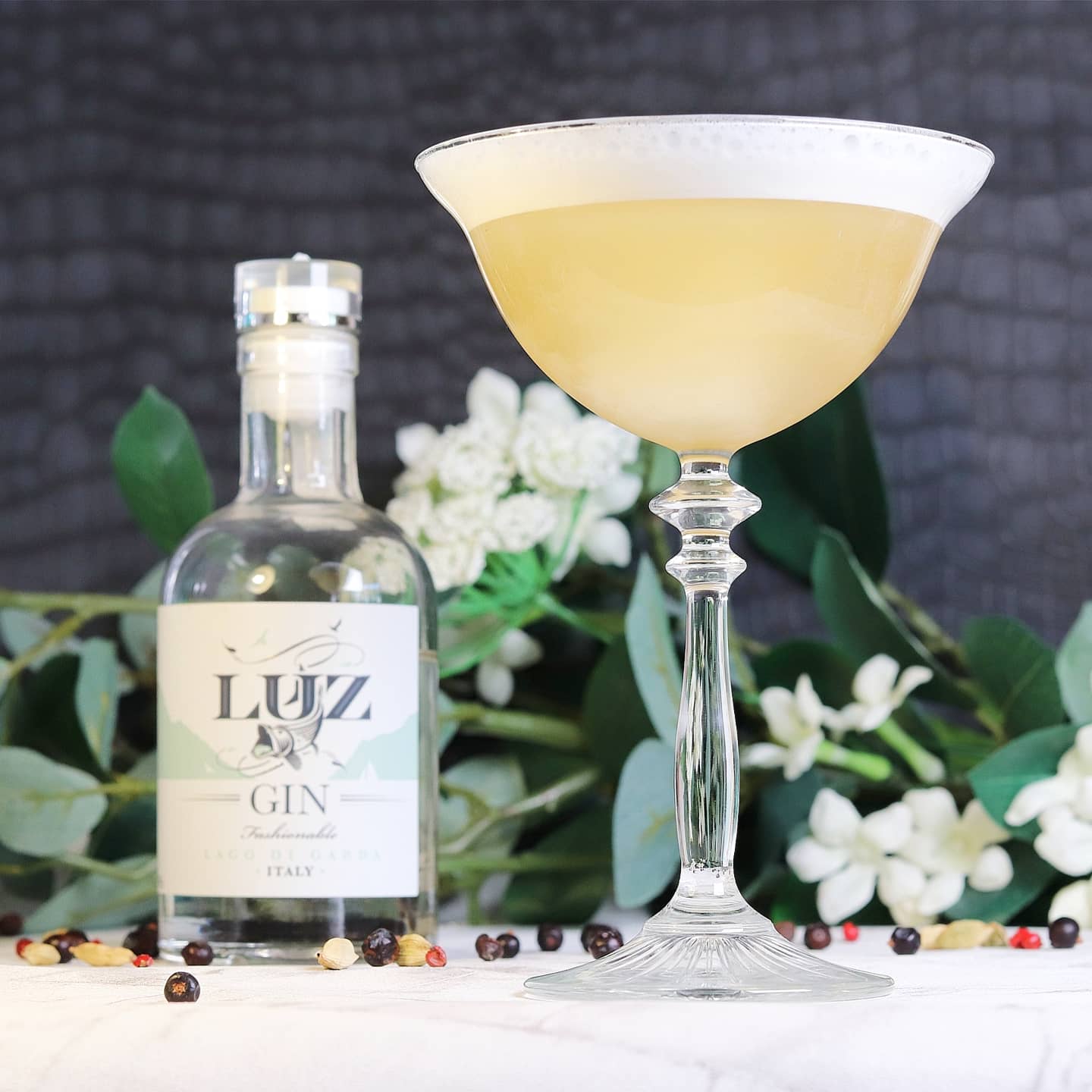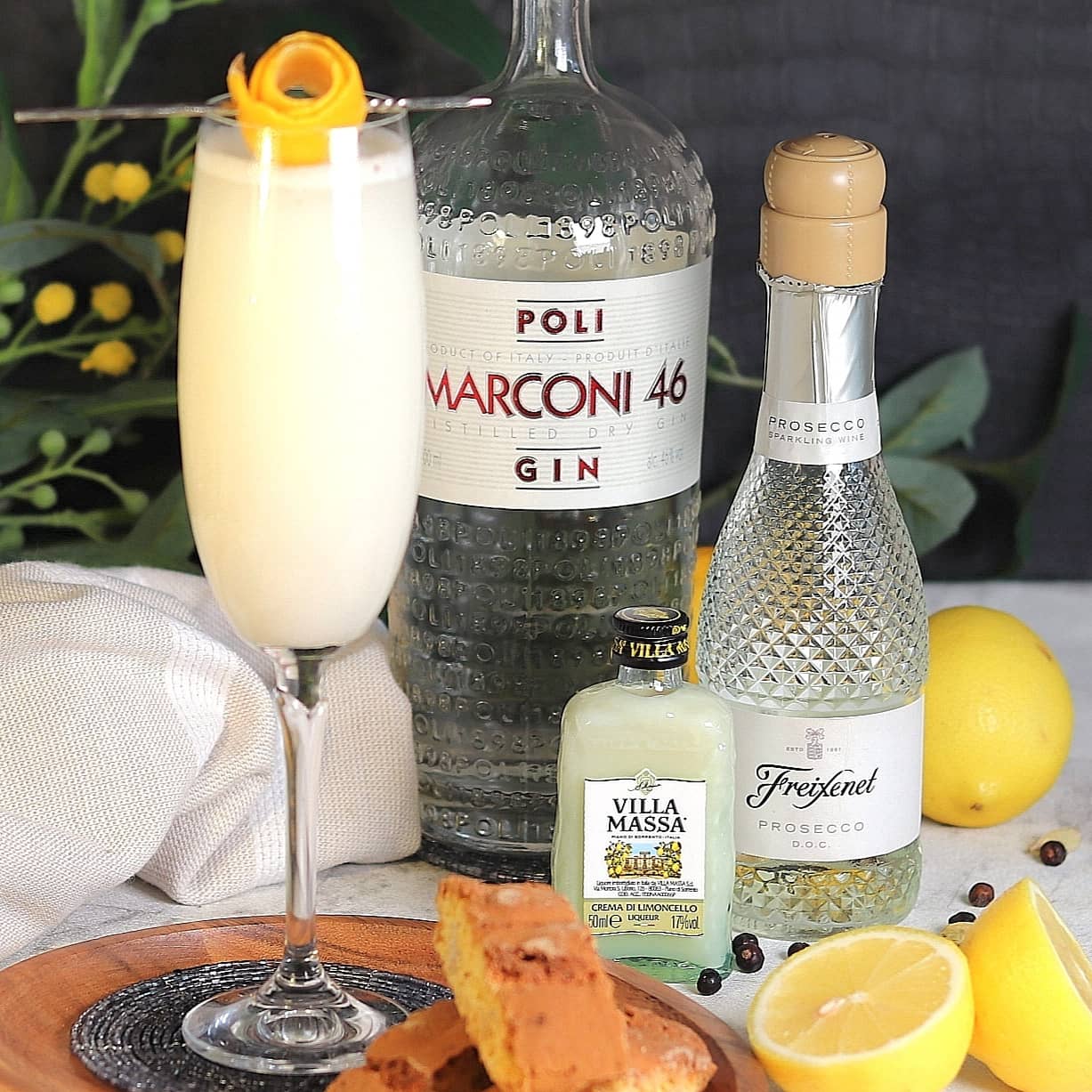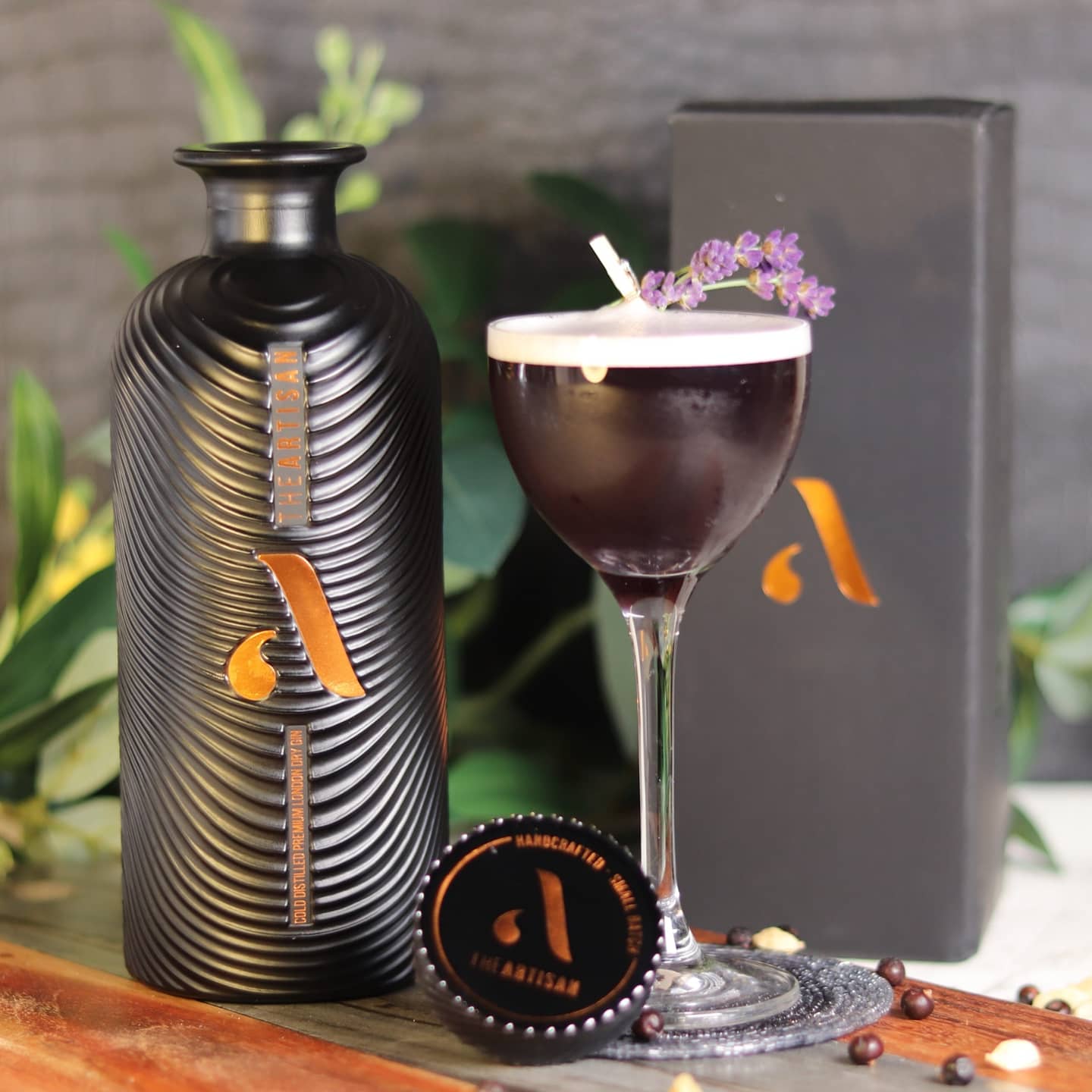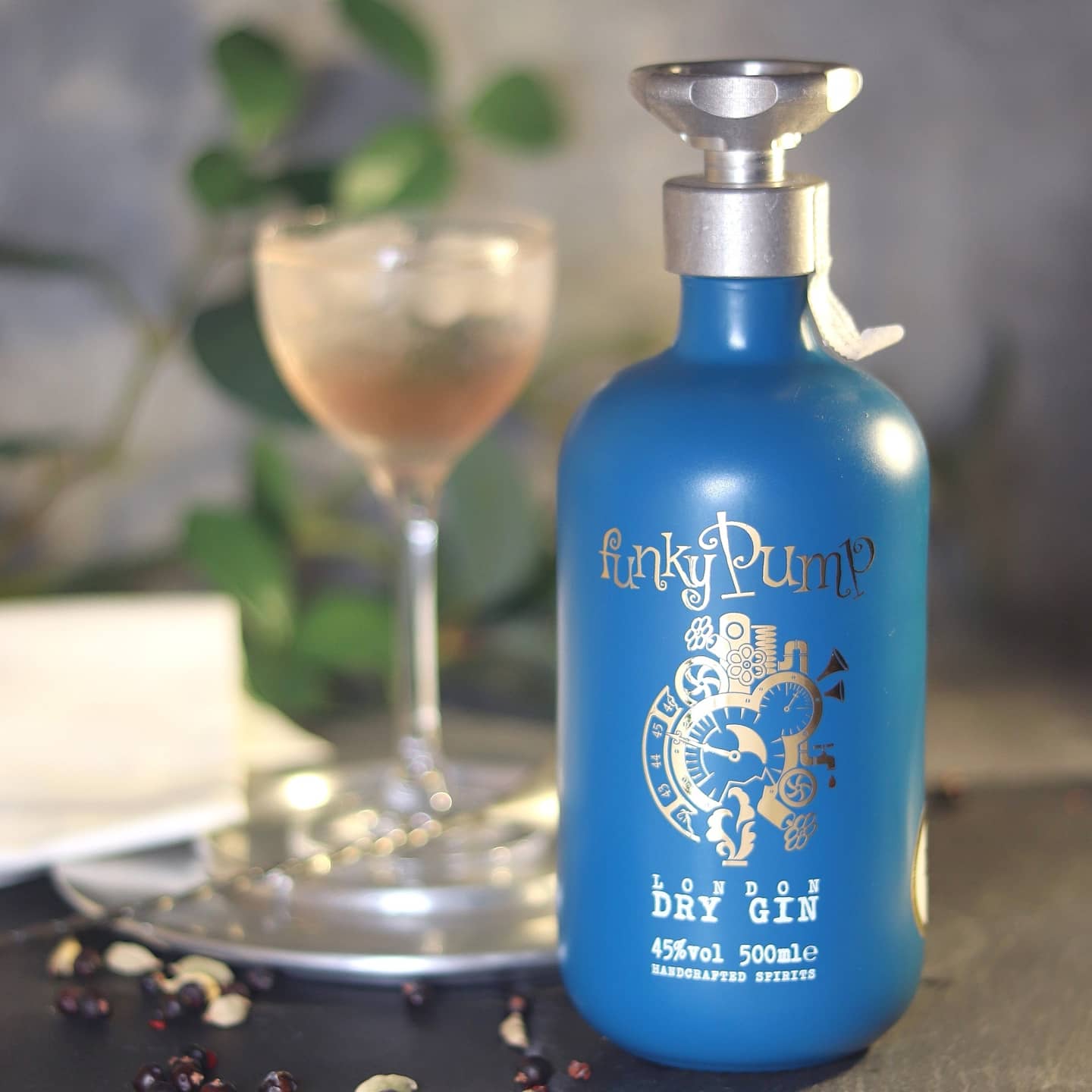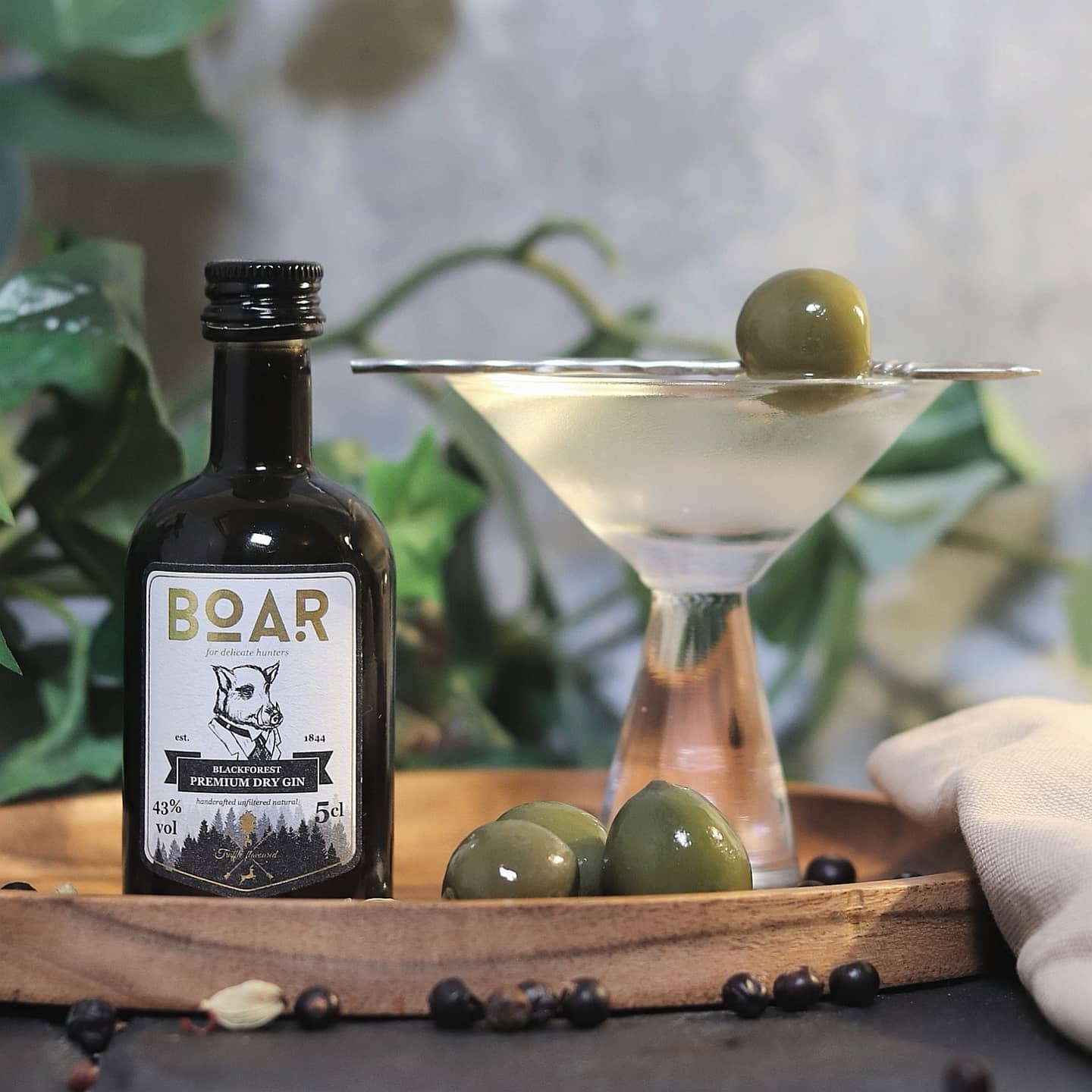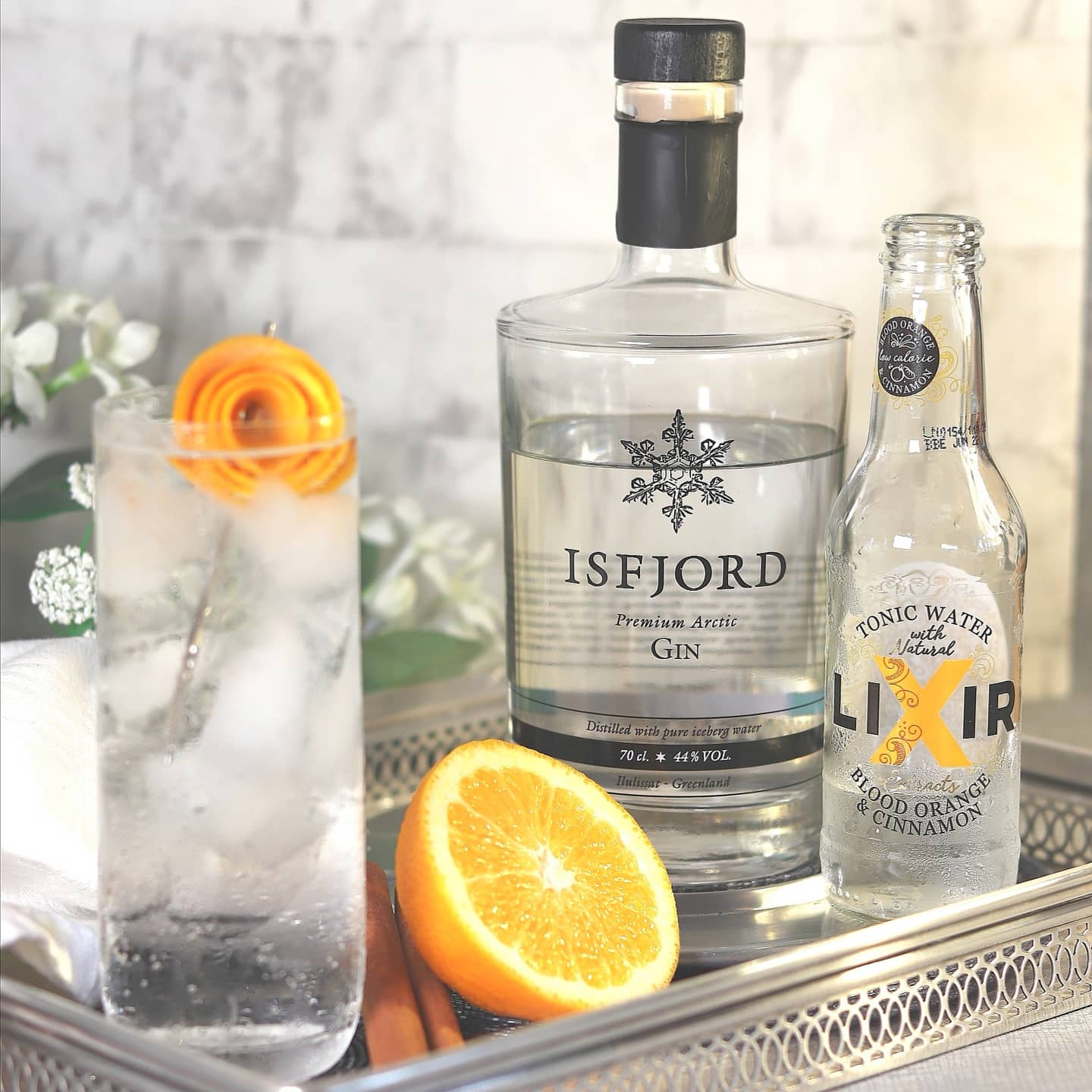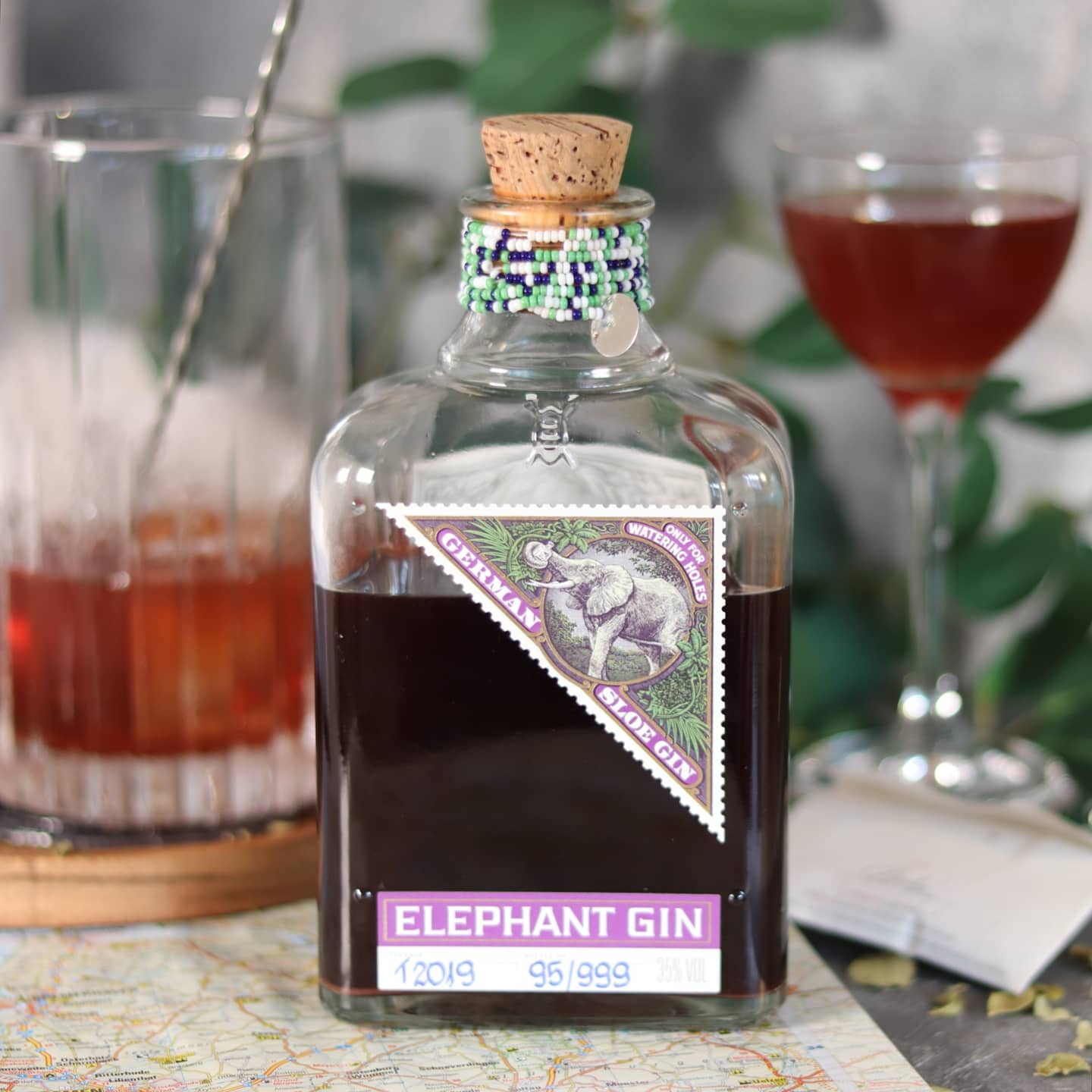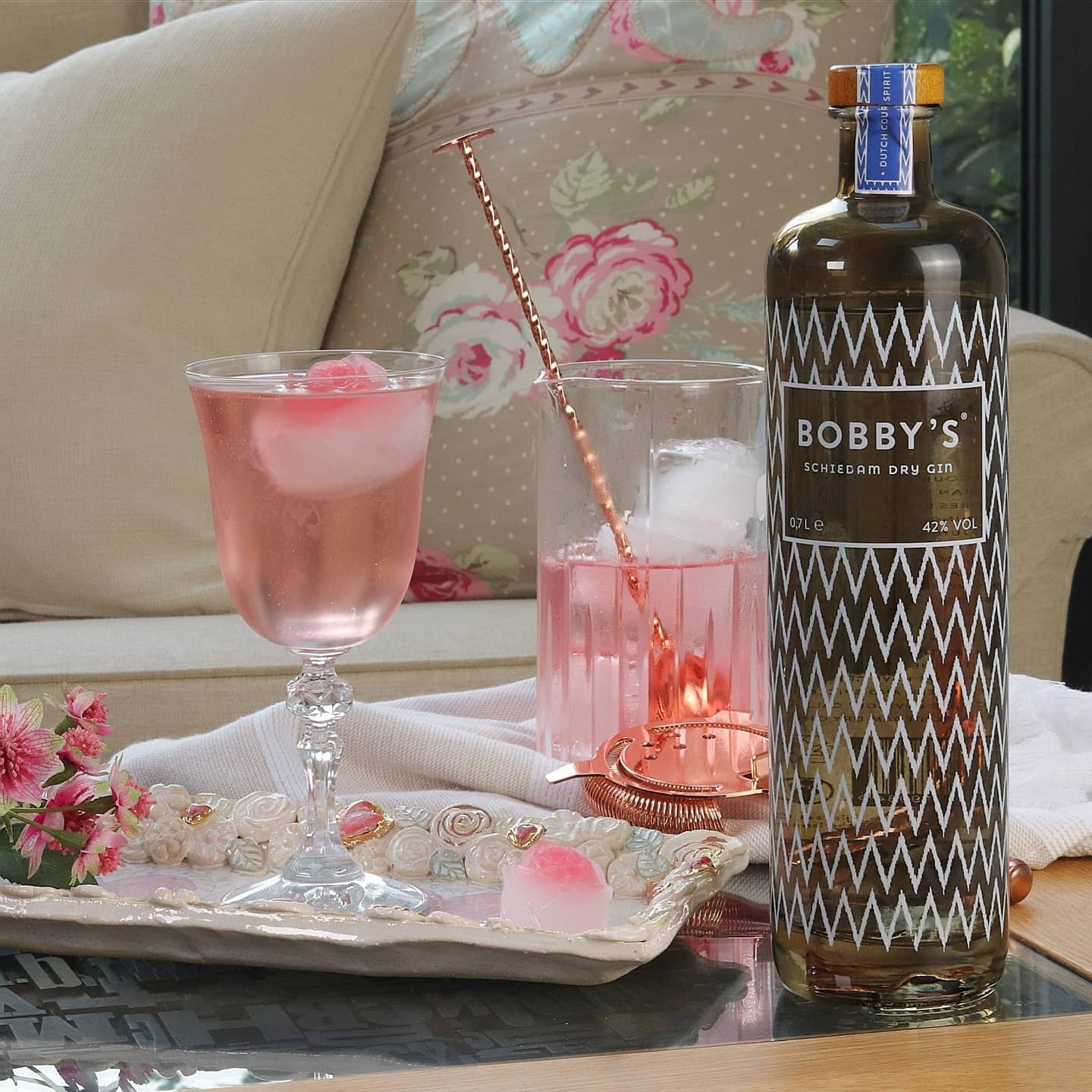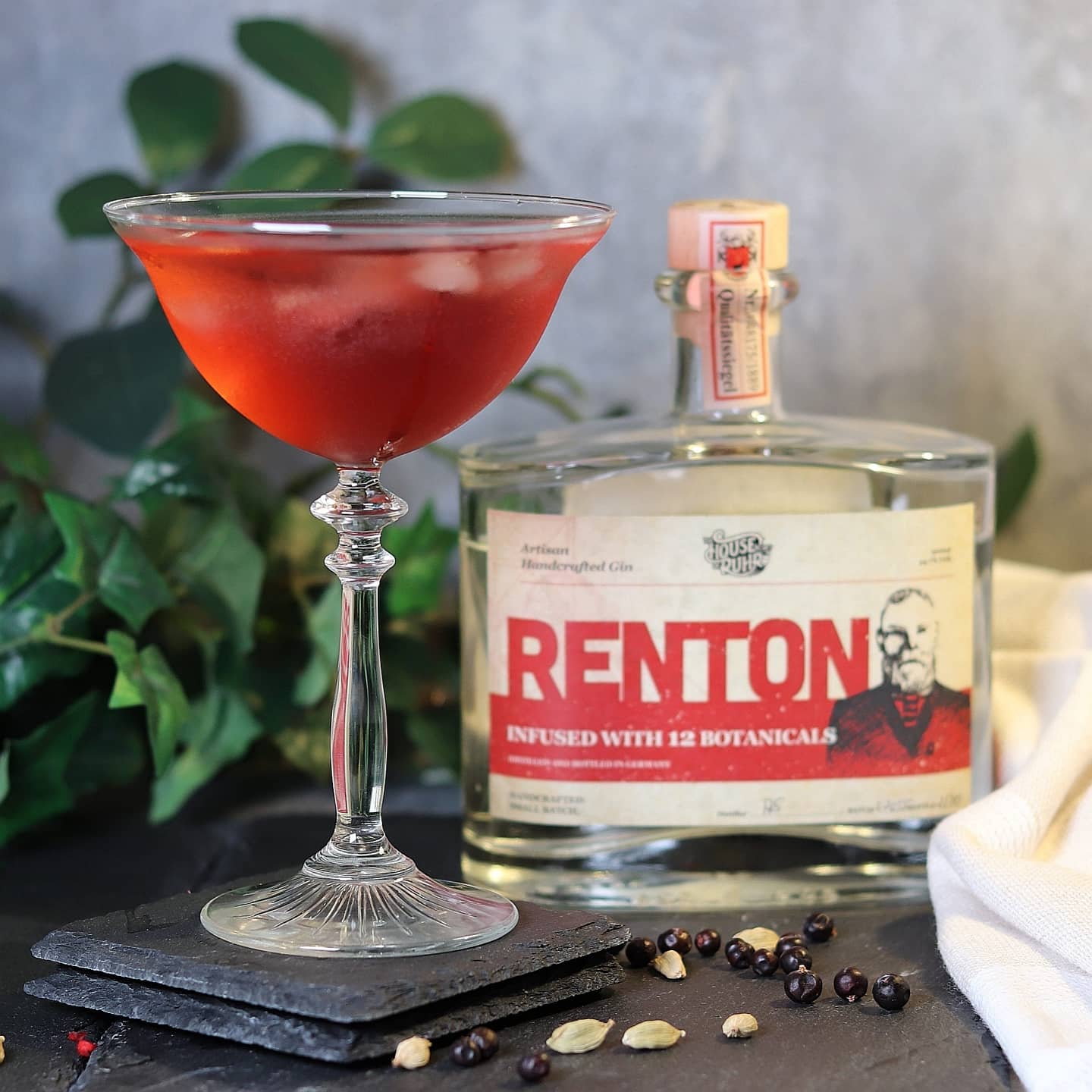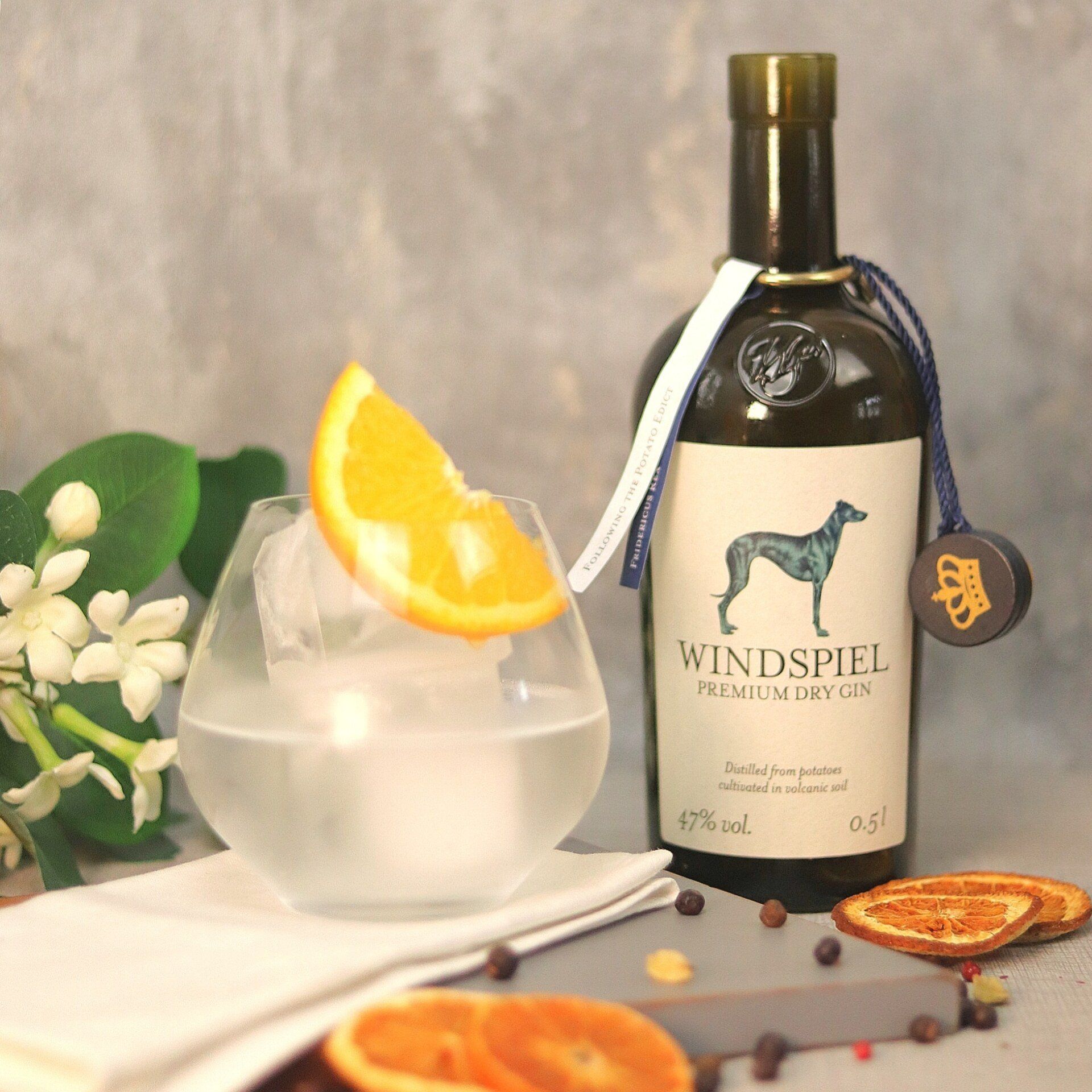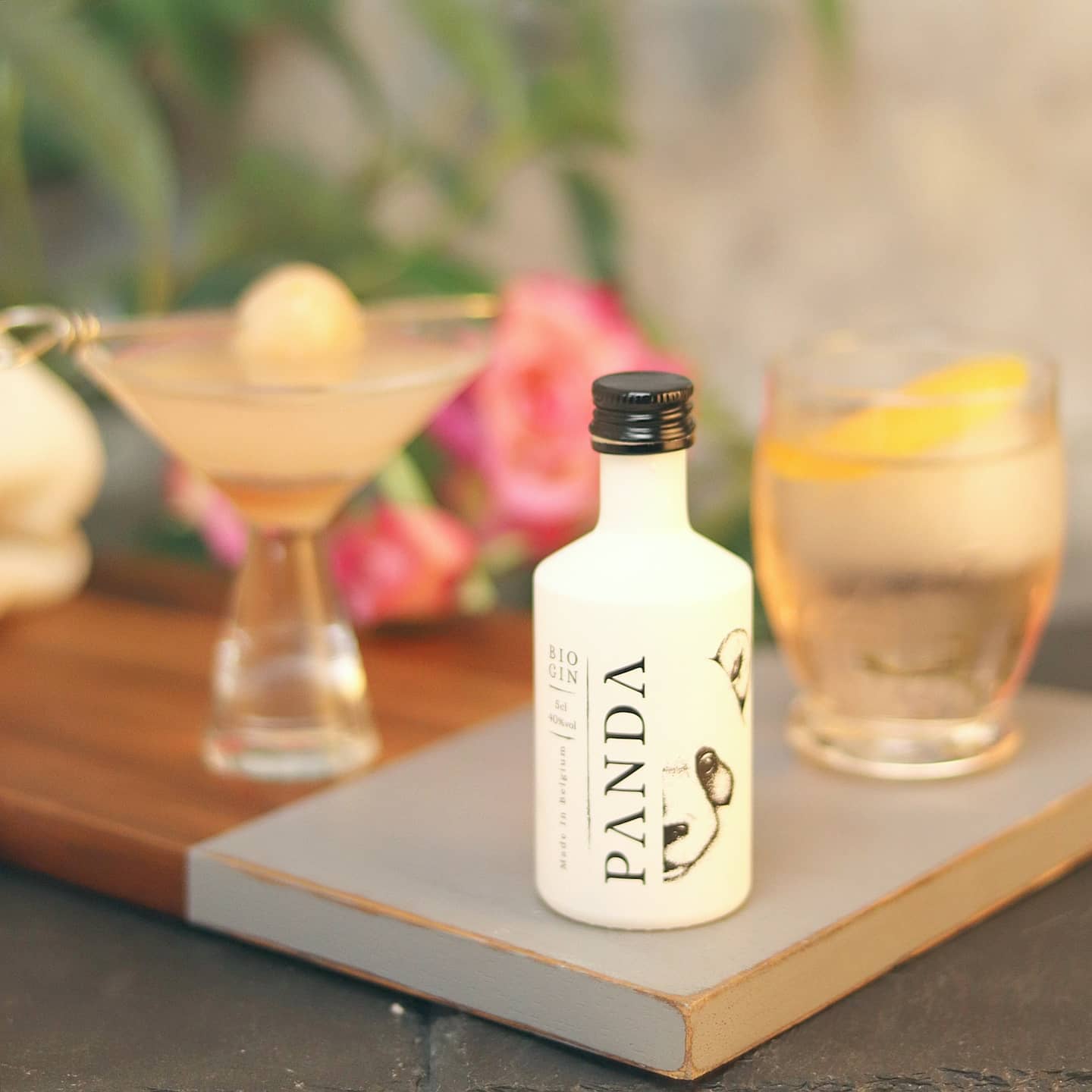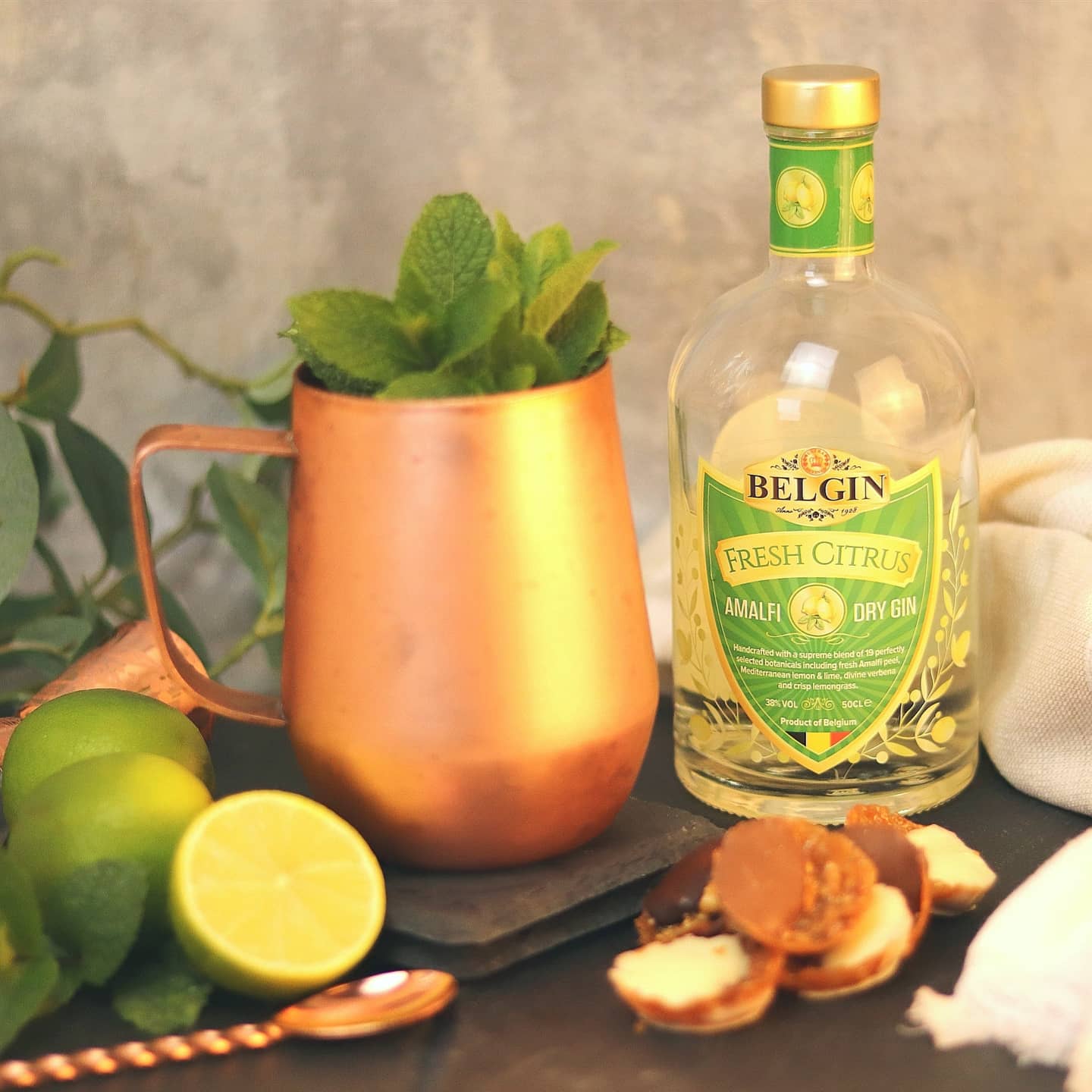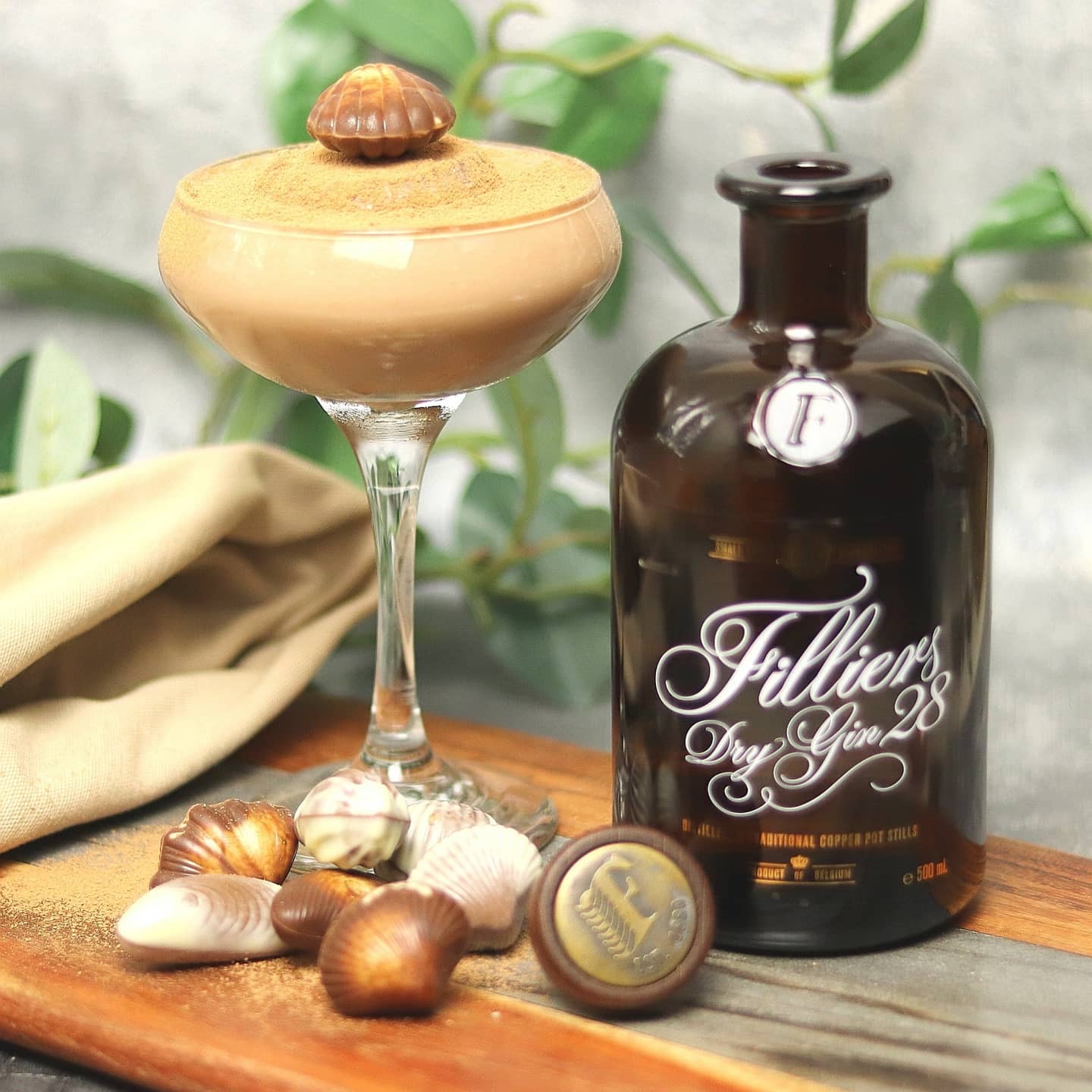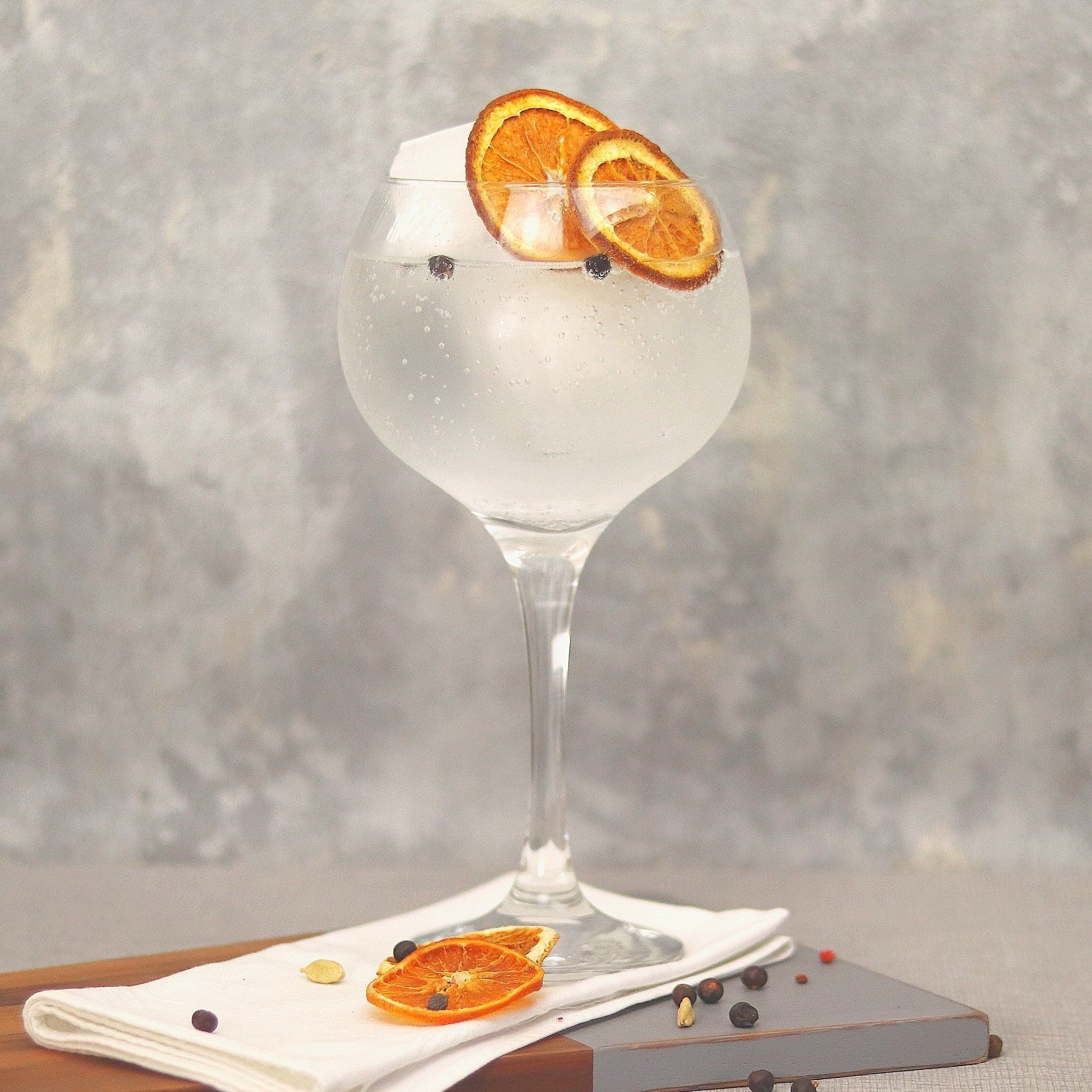Virtual European Gin Tour 2020
The Lockdown Year

Start Point - Salcombe Gin
Salcombe Gin
Button
Let’s Gin Europe
START POINT
Another epic #virtualgintour but this time, I’m off to Europe for a month. With many holiday plans shattered due to the pandemic, come with me and let’s go and explore the distilleries and destinations of some of my favourite European gins… all from the comfort of your sofa! Each day I will be somewhere new and have some interesting ditty to tell!
What will be most interesting is looking at the difference in styles of gin across Europe and how they are influenced by locality. There are new styles of gin that have emerged in southern Europe, with Spain leading the way, influenced by Mediterranean fruits and herbs, whilst we still see traditional styles coming from countries where genever originated. Native botanicals, food culture and base spirits make a gin unique and although we typically appreciate gins independently of each other, it’s going to be really interesting to look at them as a series and see how the styles and flavours change as I move around The Continent.
I’m setting off from Salcombe – drinking the suitably appropriate Start Point Gin, named after the lighthouse which marked the beginning of the Salcombe Fruit Schooners’ journeys to Europe. The fruits and spices they collected inspire this award-winning gin’s signature flavour.
Loads of piney juniper and warm, citrussy spices dominate in this gin – paired simply with a light tonic and some grapefruit.
The first part of this virtual tour is by sea. Check back tomorrow to see where I land.
Virtual European Gin Tour Stops
Day 1 Chassiron, Il d'Oleron, France Melifera
My first stop of my #virtualeuropeangintour is France and in particular, Chassiron lighthouse on Oleron. Although this lighthouse was built on the NW part of the island several centuries after Eleanor lived, it has a special significance to Christophe, the creator of Melifera. This is where he would spend summer days surfing with his family and evenings contemplating the horizon. It’s where he knew he wanted to locate his distillery and is represented as part of Eleanor’s Seal on the labels.
Hopefully you have read my first post about Melifera, where I attempted to connect all the dots in the story, as this time I want to focus on the bottle and naturally, its very special contents.
The design is based on an old apothecary bottle – simple and stylish – with a texture reminiscent of the rippling sea and windswept sand dunes and it is crowned with a ring of immortelle flowers to match those Eleanor had woven into her crown when she married Henry II in 1152. These are symbolic of spiritual wisdom and fertility. Her first marriage to King Louis VII of France had been annulled just 8 weeks prior and to represent her two marriages, the rampant lion on the crest also has two tails.
There are a total of 9 botanicals, some kept secret! On the nose it’s slightly sweet, earthy and herbal. It’s extremely soft too, with no harsh alcohol notes. To taste it’s complex – sweet and jammy from elderberries and immortelle, smooth with spicy notes and a dry, slightly bitter clean finish possibly from gentian and mugwort. Not only does immortelle have significance, but in the Middle Ages, mugwort was frequently used as remedy against fatigue and to protect travelers against evil spirits & wild animals. Perhaps Eleanor used some to line her shoes when she embarked on her Crusades. Melifera perhaps lacks dominant juniper but with everything else going on, it’s not important – I really love it as much as I do the story.
My cocktail is a red wine sour which links the past and the present. Wine is what Eleanor would have drunk and coincidently was imported into England from around 1152 – an expensive and noble drink – fit for Kings and Queens.
Day 2 Cognac, France Audemus Pink Pepper Gin
I’ve not travelled far today – just down the road from Oleron to the heart of the old town of Cognac, for a peek into the Home of Pink Pepper Gin. It really is a home, as the distillery is in the living room of one of the founders!
Founded in 2013 by Australian born Mika, an ex cognac distiller and business partner Ian, they craft spirits which combine modern techniques with traditional methods. Each unique batch is named in honour of family or friends who have supported or inspired them and allowed their dream of owning a successful brand to be realised.
The 9 botanicals are infused, individually vacuum distilled and then blended – a process which is a true labour of love, as each batch takes months to create. Pink Peppercorns, Juniper, Vanilla, Honey, Tonka Bean, Cinnamon, Green Cardamom and 2 further secret ingredients.
It’s a very distinctive gin – it reminds me of a rich mille feuille , oozing with vanilla Creme Patissiere or a boozy Crème Brûlée – yum!
But for my cocktail today, I’ve settled for something different, and that links well to Mika’s past as a cognac distiller and of course, the city. It feels like a very grown up drink and despite me not being a Cognac drinker, I really enjoyed sipping this one.
AMPERSAND
25ml Remy Martin VSOP Champagne Cognac
25ml Pink Pepper Gin
25ml Sweet Vermouth
2 dashes of orange bitters
Mix with ice to chill and enjoy.
Day 3 - Citadelle Gin, France
Today is a short drive south to Ars to visit the home of Citadelle Gin – Chateau de Bonbonnet.
Sipsmith pioneered the way for small batch distillers here in the UK by getting the Gin Act of 1751 repealed in 2008, but well before the gin boom, the founder of Citadelle was challenging antiquated laws in France. Cognac producers are legally only allowed to distil between November and March, leaving stills idle over the summer months. Having taken over operations at Maison Ferrand, Alexandre Gabriel was keen to experiment with gin distilled in their open flame cognac stills but this process was banned under French Law. Undeterred by French bureaucracy he spent 5 years challenging the Appellation d'Origine Contrôlée (AOC) and after proving historic precedence, in 1995 he won his case.
The following year, without the expense of buying dedicated gin stills, he was able to launch Citadelle Gin, having taken inspiration from a recipe and the name of the first French genever distillery established in the Citadel of Dunkirk back in the 18th Century. They also use a patented technique of progressive infusion and together with the open flame to heat the pot stills, this results in a unique gin which has won several awards over the years.
My research also uncovered something else with an interesting link to Citadelle. Not the gin but rather their beautifully designed bottle – something that is a necessity in today’s competitive market. In 1880 Claude Boucher, a master glassmaker who founded the Faubourg Saint-Martin glass plant in Cognac, patented a mechanised glassblowing machine, which revolutionised the bottle industry. It used compressed air to blow the molten glass into the moulds, saving the glassblowers a lot of puff! This machine was only updated in the 1930s, at which time Saint-Gobain had acquired the business and fairly recently, the packaging division called Verallia was sold off to Apollo et Bpifrance. Want to guess who makes the bottles for Citadelle?
My cocktail is a nod to the history & production methods of Citadelle, using 50ml gin, 25ml triple sec, 20ml cognac, 2 dashes each angostura & orange bitters.
Day 4 - Gin Sea, Galicia, Spain
I’ve headed south today to Galicia today and the autonomous province of A Coruña in northwestern Spain. Galicia is known in Spain as the land of the 1000 rivers, with over 1000 miles of coastline due to all the river estuaries, but also lays claim to having one of Europe’s only waterwalls which fall directly into the Atlantic. It also has its own language, Gallego, which shares roots with Portuguese, but has Celtic roots dating back to 600BC, so don’t be surprised to see bagpipes being played during some of their fiestas! The province is rich in forests and farmland, with some excellent red and white wines being produced in the region, and a local spirit called Oruja, which is a pomace brandy, made from the remains of the grapes after pressing. It’s a bit of local firewater and has it’s own fiesta dedicated to it, so should you come across it, do treat it with caution!
Of course, there is gin too and local sommelier, Manuel Barrientos, launched Gin Sea back in 2012, wanting to produce a gin which represented Galicia. He had over 100 restaurant professionals help him perfect the recipe and it’s distilled at Destilerias Acha in Dumbria, one of the oldest distilleries in the Basque country and indeed Europe. They use an old Hervé & Moulin pot still which has been in use since 1890.
There’s quite a bit going on in Gin Sea – herbs, spice and even a bit of minty freshness. I thought it may hold up really well in some new tonics which I was kindly sent to try – Twisted Tonic. These are all natural, low calorie, sweetened with stevia, kaffir lime and lemongrass. It’s marketed as being an alternative to lemonade, but I think it’s still got that bitterness from quinine that will appeal to regular tonic drinkers and the citrussy element also comes through well. I’m not normally that keen on stevia as it has an aftertaste, but I didn’t get that with this tonic. They have very kindly offered anyone who would like to try them 15% off if you quote GINSQUARES
So, obviously, being in Spain, the first serve is a gin tonica with a side of olives!
Day 5 - Cobalto Co-17 Gin, Portugal
I’ve definitely headed to Portugal because I love pastéis de nata! With my gorgeous warm custardy tart I’m having a side of gin and I’m calling this a Portuguese Martini - 50ml gin, 25ml dry white port and a dash of orange bitters.
I have written in detail about Cobalto Co-17 before and I’ll share the post in my stories again to save you scrolling down, but why I’ve chosen this gin is because they are based in the Douro wine region, which is where port is made, and I thought I would focus on port for today’s post. Should you ever venture down that way, it’s highly recommended that you do an afternoon tour of the Cobalto distillery, so that you can enjoy a G&T at sunset, when the river and mountains of the region melt into one and you will understand just why they are so inspired by the colour blue.
Oporto is of course the spiritual home of port but it starts its life in the vineyards of the Douro region. White port is produced from a blend of different white wine grapes and ranges from sweet to extra dry varieties, with the dry varieties being the most popular for cocktail making. You could split the base of a Collins or French 75 for instance between gin and white port and this will not only lower the ABV, but also add depth of flavour. The sweetest white ports are called lagrima (tears) due to their viscosity. Rarely exported, they are intended primarily for the domestic market.
Taylor’s, who pioneered White Port, first blended their Chip Dry in 1934 and it is made from selected dry white ports – predominantly those made using the Malvasia Fina grape. It’s delicate with a fresh and fruity nose and a lively and crisp palate with of course a very dry finish. It’s not vermouth, but I really do think this has made a very acceptable Portuguese Martini.
So whether you want a port and tonic or a port, gin and tonic, I do think a bottle is a good addition to the cocktail cabinet and especially one as good as Taylors. I’m hanging about Portugal for a bit longer, so will see what else I can make with it and showcase some other gins from the region too.
Day 6 – Stop 1 - Neighbours 11 Gin, Costa Alentejana, Portugal
Ok, let’s get back to the gin tour after drooling over the local tarts! Today is 2 short stops down towards the Costa Alentejana, with the first stop being at Ginbow Fine Spirits, where they make the fabulous Neighbours 11 gin. Once again I will reshare my post on this in my stories, as I did write about it back in November last year, but it really does deserve being included in my tour, just because they are so innovative. Why you ask? Well, they use 10 botanicals, but the clue is in the name…. Neighbours 11 and the sax playing meerkat on the label. Yes, music – it creates vibrations on the copper condensing coil and is thus their 11th botanical.
All their bottles are also hand numbered and signed by their master distiller and Neighbours 11 is just one of a trilogy of gin they produce. Their Caviar gin has just won Best Portuguese London Dry at the World Gin Awards, as well as Silver in the London Spirits Competition – definitely need to get my hands on that next!
Ginbow are all about enjoying the pleasures and delights of life and sharing special moments with friends over a drink. In today’s crazy world, we do need to sometimes just slow down, enjoy the moment and spend it with people we love and I guess, that’s when a well-prepared drink comes into it – hopefully gin!
Of course, being in Portugal, I’ve dug into my cupboard and hauled out a bottle of Dow’s red port, which makes a good substitute for vermouth in a negroni. Plus the resulting colour is just fabulous too! The lush fruity flavours of the port complement the spices in the gin – makes quite a complex negroni and definitely worth trying if you have a bottle knocking about in your bar cabinet.
Dashing off now to the next stop, so tune in later to see where I am!
Day 6 - Stop 2 - Black Pig Gin, Portugal
Today I’m heading into the heart of the Alentego region, where life slows down and to visit Black Pig Distillery. I’ve written about them previously, so will reshare the post in my stories should you want to know more and I’ll focus a bit on the region, as I think it gives some insight into what they are all about.
The cocktail I’ve chosen again uses White Port and I’ve made a Gina Paloma – why Gina? It’s the name of the piggy on the bottle!
Typically the countryside in Alentejo is open, rolling hills and plains, scattered with native cork oaks, olive trees and grapevines. What you will also find are eucalyptus trees, imported into Portugal mainly for ornamental and medicinal reasons in the late 18th century and also to control erosion in the mid 1800s. Over the years there have been many local uprisings against the eucalyptus plantations, with locals ripping out acres of newly planted trees as they reduce the water table, don’t benefit any of the local wildlife and are also a fire risk due to their size and that they are highly flammable. However, today Portugal is Europe’s largest producer of eucalyptus pulp and it’s one of the country’s biggest exports (in particular paper and toilet paper) and at the beginning of lockdown, probably ensured that we all had tons of the soft white stuff to unnecessarily stockpile! It still doesn’t change the fact that it’s invasive and the main cause of devastating damage during fires and of great concern to local environmental groups.
On a lighter note, the past 300 years, the region has also been the world’s most important area for growing cork, which is still harvested by hand with one tree yielding around 4000 wine bottle corks! Inbetween the trees, the areas are given over to grazing of cattle, sheep and of course the Iberian Black Pig, with it’s characteristically long snout, used for foraging for acorns. The pork from this breed is highly valued and expensive and the distillery actually started out as an ethical pig farm in 2006.
The owner, Miguel Nunes began experimenting with madrone, a local fruit brandy and branched out into making award winning gin & rum. Many native plants benefit from the pigs foraging and turning of the soil and these are used as botanicals. Even the base spirit is a carob & acorn ferment. As you can see, the distillery, pigs and land are all important and contribute to the gin’s unique flavour profile. Miguel is even supplying madrone seedlings to local visitors, in his bid to help the fight against eucalyptus and in turn these produce the berries he uses to make madrone.
Gina Paloma
50ml gin
50ml white port
50m grapefruit juice
Syrup to taste
Top with soda if you prefer a long drink
Day 7 - Larios Gin, Spain
I would probably not be forgiven if I didn’t feature Spain’s most popular gin Larios. It’s a cheap and cheerful gin – nothing amazing, but decent enough if you want a quick g&t. It’s citrus forward, will disappoint the juniper police and sits in the “meh” category for me! A fairly decent serve is with a massive squeeze of lime to zing it up, loads of ice and a nice crisp tonic.
The gin has its origins in Malaga and it dates back to 1866, when a French entrepreneur and Spanish associate got together and founded a distillery – Jimenex & Lamothe. In 1916 the Third Marques de Larios bought the distillery and the brand Larios was born.
The Larios family are undoubtedly a wealthy family, with roots in Malaga from the early 1800s. The family split into two with one half heading to Gibraltar, where they were very influential and successful merchants, whilst the Malaga branch was at the forefront of urban development of the city. When the well known shopping street, Calle Larios, was being constructed in 1880, the local government needed to raise 1million pesetas and did so by selling shares, which were mostly bought up by the Larios family, who took over the responsibility for the project - the street is named after the Second Marques. Having historically invested and traded in all sectors of the economy, they now mainly focus in real estate.
Most families have a skeleton in their closet and it appears so does the Larios family! In 2010 a Spanish trumpeter claimed he was the rightful heir of the Larios fortune, as he was the result of an affair between his mother, a cook for the Larios family and the Fourth Marques de Larios (who had no children). The Marques was exhumed and the DNA results didn’t support this, but it didn’t end there. Accusations have been flung about, which include suggestions that the family moved the body to prevent DNA testing, as well as suspicions now being raised as to how the Marques died. Two books have even been published - The Poisoned Inheritance of the Marquis de Larios and Assassination, Freemasonry and Francoism (The poisoned inheritance of the Larios. Part II).
Suddenly Larios becomes interesting!
Day 8 - Sikkim Gin , Spain
I’m not quite sure how I can top the story in my last post and the next lineup of brands just seem a little boring! However, location, location, location! I’ll be travelling along the Spanish Costas and trying to find some interesting titbits for you all!
Today I’m on the Costa Cálida, in Murcia, which is famous for fruits and vegetables and aptly called Europe’s Orchard, or Heurta de Murcia. The low-lying plains are rich in minerals and although irrigation is somewhat problematic, they have oodles of sunshine year-round, which results in several harvests. It’s a small but diverse region, with friendly people and remains relatively unspoilt by tourism, compared to the other Costas.
It’s also where you will find the home of Sikkim Gin, a brand which has positioned itself in the luxury category and claims to connect two cultures – the British for gin and India for tea. They take their name from a region in India, where some of the world’s best tea is grown and specifically use a red tea base for their award-winning range of gins.
Sikkim Privée is a London Dry Gin with key botanicals of cardamom and coriander. The bottles used have a very heavy base and are simply decorated, being inspired by a perfume container of the 1920s. Each edition comes in a different colour to represent the prominent botanical in the gin with white representing the coriander flower.
My cocktail of choice here is the elegant martini, but I’ve replaced vermouth with Fino Sherry and have added a dash of cardamom bitters to it.
Sherry has it’s origins in the Sherry Triangle “El Marco de Jerez” in Andalucia and there are several types, but it’s Fino and Manzanilla which pair well with clear spirits. These are the driest of sherries, made with Palomino Grapes which are bland and neutral and suit the winemaking style. Finos are quite fragile due to their low sugar content, so are best used up quickly after opening – locals discard unfinished bottles after a day, so look for half sized bottles if you want to experiment too. Fino and Manzanilla differ only in that the latter is a little more delicate and subtle as a result of being aged on the coast and being subjected to coastal breezes. I’ll be using both in upcoming serves and experimenting a bit more with using sherry to replace vermouth while I’m in Spain!
Day 9 Valentia Gin - Valencia Spain
Day 9
#virtualeuropeangintour
A short stop up the coast is Valencia and there’s a good reason for me stopping here – no, not gin, but tomatoes!
Even Google makes a fuss of La Tomatina, honouring it with its own Google Doodle. It’s the place to be the last week of August and were it not for the pandemic this year, hundreds of people would be gathering in Buñol, a few miles outside of the city, to continue the tradition that started as food fight between a few youths during a rather sombre street parade in 1945.
These tomatoes are never going to be eaten and are low quality, inferior tasting and bought in cheaply, with costs covered from the sale of tickets for the event. In fact the town benefits financially, as the festival lasts all week, with fireworks, paella (which originates in Valencia) competitions and more. The actual fight lasts only an hour, starting around midday when an enthusiastic youth manages to climb to the top of a greasy pole to reach a slice of ham, drops it into the chanting crowd and the claxon sounds. Trucks roll in, packed with tons of tomatoes and locals offload them into the expectant crowd, and then all hell breaks loose!
There are rules though – you have to squish the tomatoes before throwing them and when the claxon sounds again after about an hour, all the fun stops! Cue the fire trucks, which come in and wash down the streets and whoever is still flailing about in the sea of tomato juice! The acidity of the tomatoes actually acts as a disinfectant and everything seems sparkly clean afterwards!
To honour this tradition which sadly had to be cancelled this year, as well as a local gin, I’m offering up a Tomatini, using Valentia – a brand founded by Alfonzo Zapeter, a Spanish distiller who is now based in Fife. The gin is distilled in small batches, using water from the Sierra Nevada mountains, has a sugar cane base and exclusively uses citrus from Valencia. You may recognise the bottle shape as the same as Sikkim, which I featured yesterday, but I’ve read that it’s due to have a revamp. When viewed from the front, you will see a heart made up of Spanish and Scottish flags, reflecting Alfonzo’s love for both countries. This gin is exclusively sold in Scotland, but proudly made in Valencia.
Day 10 - Port of Dragons Gin, Catalonia, Spain
Today I’m heading to Catalonia and stopping at Destileria Premium in Cervera, where they make Port of Dragons. These gins replicate 18th century recipes and distilling techniques. Their Pure gin is just one of their range and is classic, juniper forward, with a malted barley base and uses juniper from the Pyrenees. It’s distilled in small batches of 600 bottles by distiller Oscar Tamayo.
What do Dragons have to do with gin, or Catalonia? I’m waiting to hear back from the distiller about the inspiration behind their name, but my journey needs to continue, so in the meantime I’m going to wing it with another story which makes a connection!
With St George being the patron saint of Catalonia, you would expect dragons to feature in local mythology. Specific to the area, these dragons emit a fetid odour which rots away anything it touches and there is one that lives in the dark depths of the Banyoles Lake, Catalonia’s largest freshwater lake. Today you can visit there and if you are brave enough, take out a canoe or even have a dip in the cool water. It’s a beautiful area with restaurants scattered around the waters edges and where families gather for picnics in the summer. You can also take a short walk to the old town of Banyoles, which was built around the monasterio Sant Esteve and explore the cobbled streets and canals, which are fed from the lake.
According to legends, the Banyoles Monster terrorised the locals with its foul breath poisoning the water and bringing diseases. It was always hungry, preying on animals which happened to come too close to the lake. The local peasants were terrified, some disappeared overnight and others tried to placate the monster with daily offerings of its favourite food – babies. Charlemagne soldiers arrived in the village and also tried to kill the monster but it burned their horses and ate those who did not flee. The locals could take no more and so enlisted the help of a French monk, St Emeterio, who with prayers is said to have transformed the creature into a peaceful herbivore, which still lives in the Lake today. But don’t disturb it, as it will still breath foul breath on you if you do!
Legends are always super interesting – this is a volcanic area, so no surprises about stories of foul air and flames. My serve is a nod to the legend and area - a smoking negroni, also using Vermut Lustau, one of the most popular drinks in Barcelona!
Day 11 - Gin Mare, Barcelona, Spain
I don’t think this gin needs any introduction at all! It’s been one of my firm favourites for a very long time and it’s usually my go-to serve when I’m out and about. I therefore had to include a stop in the fishing town of Vilanova i la Geltrú on the golden coast of the Costa Dourada.
This area is the perfect location for soaking up everything that the Mediterranean has to offer. It has over 7km of beautiful fine sandy beaches and clean, tranquil waters, which makes it the perfect destination to put your feet up and relax or take long, leisurely walks along the seafront.
It’s therefore no surprise that it’s the home of Gin Mare, which is made in a 13th century chapel by Destilerías Miquel Guansé and is all things Mediterranean in a bottle. They use olives from Spain, rosemary from Greece, thyme from Turkey, citrus from Valencia and Seville and basil from Italy. In true Mediterranean style, there is no rushing the making of this gin. The citrus fruit is macerated for a whole year in neutral spirit. The other botanicals are also macerated and independently distilled and the signature Arbequina olives used, make each batch totally unique, as their acidity level changes each year due to environmental conditions. Precipitation and temperature during olive growth and maturation are the most significant factors which influence olive oil composition, as does how the olives are treated once harvested.
Gin Mare totally ticks all my boxes – it’s juniper forward, herbaceous, savoury and extremely versatile! The perfect pairing is Mediterranean tonic, but any crisp tonic goes well with it and fear not – if you don’t have a jigger to hand, just use that beautiful cap, as it’s the perfect 50ml measure! Garnish with a sprig of rosemary, spiked with olives – gin and a snack all in one!
Destilerías MG also make Le Tribute – another gin in a beautiful bottle and worthy of trying alongside their matching tonic and if you are talking tonic, then their 1724 is also a perfect pairing with Gin Mare. Gin MG and Masters are also brands in their portfolio which I’ve not yet tried, but given the connection, should be worthy purchases in future to complete my set of DMG gins – and let’s not forget the highly coveted new Gin Mare Capri edition as well!
Thus ends my tour of Catalonian gins, but I’m not leaving Spanish territory just yet – check back tomorrow to see where I’m heading!
Day 12 - Gin Eva, Balearic Islands, Mallorca/Majorca
DAY 12
#virtualeuropeangintour
I have departed mainland Spain and caught a car ferry (humour me!!) to the Balearic Island of Mallorca (Majorca). It’s one of the most popular destinations in the Mediterranean, but is more than just a party island. Of course, my focus would be on distilleries and there are a number which have popped up on the island, some more well-known than others.
Back in 2012, husband and wife team Stefan and Eva decided to adapt their wine-making skills and set up their own distillery in a small unit in an Industrial Park located in Llucmajor, not too far outside the capital of Palma. They acquired a 150l copper pot still and proceeded to create a range of gin and attempt to bottle the essence of Mallorca. They exclusively use a local Phoenician juniper, which is wild and thrives in the dunes behind of one of the best-known and unspoilt beaches on the island - Es Trenc. This juniper has a higher oil content and hint of salinity due to it’s coastal location and is steeped for at least 48 hours before being distilled and then aged for another 16 weeks..
Much love and care is taken in each unique batch of 70 bottles and Stefan uses some unique processes to ensure that the best is extracted from each of the botanicals used.
Alongside their Signature Dry Gin, Gin Eva also offer a Olive Extra Dry Gin and Bergamot Dry gin. My ultimate favourite is Gin Eva Green Spice Dry Gin - a special edition of only 1000 bottles, which was a major challenge for Stefan to create.
Together with Ingo Holland, a Michelin-starred chef in Germany, they have created a gin which uses only green botanicals. Many botanicals were experimented with, including the idea to even colour the liquid green, with an attempt to try and extract, in Stefan’s words “that intense green aroma you get when you bite into a sweet but not yet ripe fruit – offending, but in a good way”.
It’s delightful – I’m totally in love with it and it’s got everything and more that I love in a gin -
Green-harvested juniper, seaweed, bay leaves, green pepper, fig and orange leaves and green oranges.
Predictably my serve is with fig leaves – a fig leaf smash sour, but I have added a measure of fino sherry in as well – I cannot tell you how wonderful it is…. A little bit of Mallorcan heaven!
Day 13 - Mistral Gin, France
Day 13
#virtualeuropeangintour
I’ve catapulted myself out of Spain and am back on the mainland again and have stopped in Forcalquier to visit a distillery which was established in 1898.
Today is all about Terres de Mistral Gin and what makes it so special. This gin was created out of a love for beautiful Provence Rosé wines, the region and its way of life, in a distillery which is situated in one of the most unique biomes in Europe and one which has for centuries attracted herbalists and chemists. A pink gin it may be, but just like the wind it is named after, it’s not at all sweet and fluffy.
Forget visions of soft breezes carrying the scent of botanicals and fresh mountain air - the Mistral is the prevailing wind which funnels down the Rhône Valley at sometimes hurricane force. It can rip vines out of the ground and break branches off trees, but yet it is of great significance to the agriculture of the area. These strong winds clear the skies of virtually all cloud, dust or pollution and ensure that the days are bright and sunny and neither too hot or too cold. The Mistral is what gives Provence that luminous light that has for many centuries attracted artists to the area. It’s not just a weather phenomenon, it is integral to the Provençal way of life and impacts the landscape, culture and architecture of the region.
Forcalquier is a historic town which is built on a slope of a hill and is somewhat sheltered by the Lure Mountain. It is here that Distilleries et Domaines de Provence has been distilling spirits for over 100 years. Many of the botanicals used by them have been growing for thousands of years on the mountain and are all harvested by hand.
Mistral Gin boasts classic botanicals alongside basil, fennel, mint, eucalyptus, thyme and pink grapefruit. These are macerated and distilled separately to intensify their flavours and as a result you have a gin that is fresh, herbaceous and complex and a far cry from what you would expect from a pink gin.
I’ve made a Clover Club this time, but a simple G&T works well with it – garnished with a bit of thyme, basil or grapefruit if you are a citrus lover! Don’t forget to also include a side of matching macarons!
Day 14 44N Gin - France
Just 15km outside of Cannes, at an elevation of around 350m, you will find a verdant landscape, where Comte de Grasse have chosen to have their home.
Grasse – fat, indulgent, plump, succulent. The translation is a bit unkind, but perhaps fitting, as this region has an abundance of everything which makes it the perfume capital of France. The microclimate and fertile soil in Grasse have encouraged flower farming and the area produces over two-thirds of France’s natural aromas for the perfume and food industry. The Old Town is certainly worth exploring, with its quirky shops and cobbled streets, however it’s the old perfumery just outside the old town, with buildings dating back to the 17th century, that has become the new home of 44N Gin.
The buildings and tower are being lovingly restored to their former glory and refitted with modern technology, all designed with sustainability in mind but also with a homage to the heritage of Grasse and it’s extraordinary people, who have generations of knowledge in the perfume industry. Combining traditional and innovative distilling methods, as well as cutting edge perfume extraction technology, which is not only sustainable and efficient, they have created a gin which has a provenance like no other. The best flavours are extracted from the expensive botanicals and the resulting gin is presented in an elegant Klein Blue bottle.
This is an incredible gin, which is woody, floral, jammy, herbaceous and spicy. It begs to be drunk as a dry martini to appreciate all the flavours and the Provencal heritage of this high-end gin. To reflect the surrounding landscape of Grasse, I have this time served up a Grasse Sour – a Basil Smash with the addition of St Germain and a foamer.
One last little titbit – the area of Grasse is 44.44 square kilometres and the location of Comte de Grasse is 44N latitude! Co-incidence? Who knows!
Day 15 - La Distillerie De Monaco
Today we are taking a peek into the life of the jet-set and are stopping at the Principality of Monaco’s first and only distillery – La Distillerie De Monaco.
Possibly best known for hosting one of the most glamorous of races, the Formula One Grand Prix, Monaco is not just about fast cars and a glitzy lifestyle. Philip Culazzo, the owner and founder of the distillery was inspired by the Principality’s historic connection with local agriculture – particularly citrus and olives – and this led him to look at ways to reconnect this history with the modern allure of Monaco through a range of spirits.
There are still many trees in the Principality which confirm it’s agricultural history and 85% of the fruit from 600 organic bitter orange trees goes to waste every year. In 2015 Philip approached the local government with several ideas of how to make use of this and they eventually agreed to allow him to collect 10-15 tons of oranges by hand and create the distillery’s founding product – L’Orangerie - a locally produced liqueur that tourists and visitors could buy as a memento of their visit.
Earlier this year, the distillery launched their first gin – Gin aux Agrumes – through Craft Gin Club in the UK, using local citrus, including the bitter oranges from Monaco and six other locally grown types of citrus – sweet oranges, lemons, limes, grapefruits, citron and bergamot. This was a huge success, selling out on the first run and remaining one of the most popular recent offerings from the Club.
The bottle has an Art Deco feel, which pays homage to the buildings and history around Monaco and is adorned with a vintage art label depicting of a view of The Rock.
The cocktail I’ve made is the suggested serve from the CGC magazine – The Race Car Cocktail, using Spuma Polara, lemon juice, Race Car Syrup (sharp & citrussy), Gin Aux Agrumes and a flourish of grated orange zest for an extra citrus hit! It’s a delicious cocktail, but with the syrup and Spuma, your drink contains almost 9 teaspoons of sugar so it’s highly unlikely I’ll repeat the serve in a hurry – do watch out for those hidden sugars in your mixers!
Day 16 - Malfy Gin - Italy
The tour continues and I have headed into Italian territory and my first stop is just outside Turin to visit the Torino Distillati in Moncalieri – the home of Malfy Gin – a gin which I’m sure needs very little introduction to you all.
However, for those who think Malfy comes from the south of Italy and the Amalfi Coast because of its name, you couldn’t be more wrong! We are firmly in Northern Italian territory here! The distillery was established in 1906 and is run by the Vergnano family, but is also part of the Pernod Ricard family.
They use a selection of coastal grown lemons, some from Amalfi and Sicily. If you have ever been fortunate enough to get hold of any of these, they are quite exceptional and some are as big as melons. Con Limone is as expected all about the lemon, but there is a solid juniper base, which does come through when diluted in tonic. I have, however, gone full on lemon for this cocktail, with a classic that I grew up on and which I have not made in years.
Do not count the sugar in this!! This is a lemon meringue pie in a glass and really it’s just for those with a very sweet tooth! The topping is Italian Meringue, which is a bit of a faff to make, so if you can’t be bothered, just whip up your egg white and sugar and that should work just as well. The cocktail part does of course contain today’s featured gin.
50ml Malfy Con Limone, 20ml Limoncello and roughly 4 tablespoons of lemon curd – just stir thoroughly and then shake up with ice and then top with your meringue and torch the top to add a little colour! It’s sharp and sweet as you sip through the meringue – probably better made in a smaller glass with less meringue, but this one was for the gram and I did have a teenager to help out and eat all the meringue topping!
Day 17 - Nakal Gin - Switzerland
Last year I was fortunate to win a bottle of Nakal in a comp with and I made 4 cocktails for a single post, so that I could make full use of a bunch of pandan which I’d managed to find in a local Asian shop. When I look back on the photos, they are a total mess, so I’m keeping it simple this time with just one cocktail and hopefully some better photos!
Nakal is distilled in Basel but Geneva is home to the brand and it’s creator, Jacob Botta. Within each bottle is a life journey, crammed with passion, patience, worldly experience and inspired by the unique and complex flavours of South East Asia. It is exotic, provocative, strong and mysterious and is a marriage between East and West.
The hearts of three separate distillations are blended to create a gin that is smooth yet robust. Juniper floats in the background and there is a little bite from the cassia. It's unfiltered and packed with oils, giving you a louche effect when adding ice to your glass and although bottled at 46% ABV you don't get a harsh alcohol hit. The aromas of sweet, grassy pandan and calamansi lime tease your nose and are easily distinguishable, but it also includes some more unusual botanicals. Calamus, used historically as a fragrant floor covering and widely used in the food and perfume industry, is aromatic and adds complexity, while galangal adds additional citrus and piney notes to the long finish. It’s really quite special and so I’ve recreated one of my original serves, the Pandan Gimlet, using lime, sugar syrup and a few drops of pandan extract.
Those of you with enquiring or imaginative minds, may look at the label or name and wonder about its significance or meaning. It’s an incredibly detailed design and even the texture of the label is beautiful. I’ll leave you all to figure it out – it is what you think it is, or maybe it’s not!
Day 18 Nginious! Swiss Blended Gin
At the start of this virtual gin tour, I mentioned that one of the most interesting things would be looking at botanicals and how they represent the local terroir and change as I move around Europe. It’s certainly the case with nginious! Swiss Blended Gin, which includes local wild botanicals which have traditionally been an important source of medicines, vitamins and minerals for the local inhabitants of the Alps.
Nginious! entered the market in 2014 after two friends, Oliver Ullrich and Ralph Villiger met in London while doing a WSET diploma and decided to create a gin which represented Switzerland. They worked closely with Hans Erismann, Brennerei-Erismann Distillery to create their flagship gin, using some unique processes which included grouping the 18 botanicals into four categories which are separately distilled (fruit, citrus, herbs and roots) and then later blended.
Ralph tragically died in a mountaineering accident in 2015, but Oliver and his wife Iris have taken the business forward. Since 2017 they have, with the help of some successful crowdfunding, been producing nginious! at their own distillery, Liquid Spirit Distillery, on the top floor of a former flour mill in Basel. The beautiful location, with views of France, Switzerland and Germany is the ideal base for the adventurous and creative team. Their products are unique and stylishly presented in bottles which are based on the shape and style of a vintage hip flask found at a London market. The labels for each expression are unique and eyecatching. Swiss Blended gin is screenprinted in two-tone red to represent the Swiss flag, while other bottle sleeves are made from leather or swimming cap material, to also reflect their contents.
Swiss Blended Gin contains some familiar botanicals, but it’s barberries, hay flowers, red clover blossoms, and blackcurrant leaves that stand out to me as being different. It’s fruity, yet herbaceous, with a bit of spice and a menthol, dry finish. I decided to play on the fruitiness and blackcurrant leaves and make a Blackcurrant Bramble using Cassis, and not having any blackcurrants to hand, I’ve garnished with frozen blackberries and some fresh mint.
Day 19 Ginarte - Italian Gin
I’ve headed south again to the capital of Tuscany, Florence – one of the most beautiful cities in the world and the birthplace of Italian Renaissance. Florence is without doubt the cultural capital of Italy, with numerous museums and art galleries, amazing architecture and fabulous landscapes. Although distilled at Distillerie Francoli just outside Milan, Ginarte has its roots in Florence.
Inspired by the visual arts and culture which surrounds them, Ginarte has been created on a canvas primed with Tuscan juniper, using a palette of botanicals, some of which link closely to the art world.
The Renaissance was a turning point for artists, with the introduction of oils as a media to bind pigments. Prior to this time, egg was used but oils dried slower and also gave a luminous transparency which tempera did not. Walnut and linseed was used, but also other essential oils, such as lavender and safflower, which worked well with blue, white and paler pigments. The Renaissance colour palette was vivid and new pigments were developed to replace some toxic and expensive minerals used for centuries. Red and yellow were very important at this time and different shades were created using various resins, oxides and compounds. Madder (Rubia), was used to create bright reds and purples, whilst Safflower and Mignonette (Reseda roots) were a source for yellow pigments. Blue pigments were mostly mineral based, using lapiz lazuli and azurite, but the introduction of Indigo from India offered an organic pigment too.
These botanicals, as well as a few others which have been used historically in local medicines, have been included in the lineup for Ginarte. It is juniper forward, delicately sweet and floral, with a clean fresh finish. I’ve made a margatini this time, as a nod to Frida’s Mexican roots.
Day 20 - Dolce Vita Gin - Targa Ilva - Italian Gin
In the 1950s during the reign of La Dolce Vita, a cocktail called The Cardinale became fashionable - made with Riesling wine, Campari, gin and garnished with lemon peel, cloves and cinnamon. Over the years, the wine has been replaced with a dry vermouth – 50ml gin, 40ml dry vermouth, 20ml Campari, lemon peel garnish. My choice of gin was appropriate of course, Dolce Vita, made by Targa Ilva, in Padua near Venice.
The Targa Ilva website tells a story of 14 yr old Emo, who with his family in 1932, travelled to Sicily for their summer holiday. En route they stopped in Naples, where Emo met a young girl from Capri and they struck up a friendship, agreeing to meet up again in Capri the next day, in the Piazza Umberto under the clock tower. They met again for the next 3 days and then the family travelled onwards to Sicily. The time spent there certainly impressed upon young Emo and he was captivated by the flavours and scents of southern Italy and the Mediterranean. This passion and love for Italy stayed with him throughout his life and was shared with his own children.
This is where the story on the Targa Ilva website gets a bit fuzzy and contradicts that on the Bagnoli website, as they claim Emo’s son Dino created Dolce Vita Gin as a homage to his father and dates don’t stack up*. I guess some things may be lost in translation and what should not be spoiled by delving too deep, is the reason behind the creation of the gin and indeed other lines which the Bagnoli/Targa family have created over the years – A love and pride in all things Italian and the summer spent absorbing all the aromas and flavours of southern Italy and in particular Capri. La Dolce Vita …. the sweet life.
It’s a beautiful tribute - the sea blue bottle; the clock face from the tower in the Piazza Umberto; and the delicately perfumed liquid within.
*Emo’s son Dino married Ilva Zita Targa (the daughter of a wine entrepreneur) and in 1954 they established Bagnoli Distilleries – Bagnoli being his surname and not Targa. They had two sons, Camillo and Giovanni Bagnoli who manage both the Bagnoli Group and Targa Ilva. Dino passed away in 1970. Ilva is still listed as President for the Bagnoli Group. The Bagnoli Distillery only branched out from making grappa in the 1980s, and Butterfly Gin was launched, using a recipe dating back to 1896, which may connect to an Emo Senior who may well have been the Air Force Major, although the Targa Ilva website tells the story that Emo was 14 yrs old in 1932 and was a future Air Force Major. I just could not piece this all together and there may well be a little poetic licence involved as to regards the story of Dolce Vita!
Day 21 - Luz Gin - Italy - Lake Garda
Today I’m headed to Lake Garda or as per its ancient name, Benaco, Italy’s largest lake and a popular holiday destination due to a local and mild microclimate. With such an expanse of water, there has to be a myth attached to it and Lake Garda is home to a monster called Bennie! The experts say it’s possibly a Wels Catfish or Adriatic Sturgeon, but most of the locals agree to disagree! You will also find here a very rare variety of carp - The Lake Garda Carpione - endemic to Lake Garda, it’s never survived anywhere else and thus is critically endangered. Don’t worry – this isn’t a fish blog and we do have a ginny link! Luz Gin have chosen to use one of the species living in the Lake on their label - the Pike - because it symbolises honour, strength and wisdom.
The best place to try Luz Gin is the Rivabar in Riva del Garda, one of the many charming old towns on the shores of the lake. Here you will no doubt meet Leonardo Veronesi, who could tell you his story first-hand while you enjoy one of his luxurious cocktails. Leo first started experimenting with recipes in 2012 when gin became popular again and 6 years later the first bottle was labeled at the Marzadra Distillery.
After reading the history behind the Marzadro Distillery, I think Leo made a fantastic choice to collaborate with them. Their story starts post WWII, when the distillery was established by Sabina Marzadro, who had a strong desire to change her life for the better. Together with her brother Attilio and a clear vision to be one of the best, they started producing grappa, combining it with local herbs, roots and berries which she collected from the surrounding mountains. Sabina handed over the management of the distillery to her brother around 1960 and his children still run the business.
All the botanicals for Luz Gin are sourced from local small farmers and diluted with water from Monte Baldo. They include juniper, olive and bay leaves, rosemary, wild mint, lemon peel, sage, woodruff and clary sage. It’s a beautiful clean and herbaceous gin with a fresh finish from the mint and designed to hold up well in cocktails. I’ve made a White Negroni Sour with it, using 50ml Luz, 25ml Italicus, 50ml fino, lemon juice, simple syrup and a foamer – delicious!
Day 22 - Marconi 46 Gin - Poli Distillerie - Italy
This is sadly going to be my final Italian stop and I’ve headed to Schiavon in Veneto to the Poli Distillerie.
Veneto is not only a culturally rich region, but also one of Italy’s most important wine producing regions. I’ll get onto the gin in a bit, but do bear with me as it does have some relevance! Although Veneto is one of the smallest regions, it produces more wine than any of the others and a lot of that has to do with the fact they upped their game in the 90’s and gained a lot of recognition for wines like Valpolicella, Soave and Prosecco.
The use of the name Prosecco, like Port, Sherry and Cognac, has since 2009 been geographically protected under DOC Law. Although the formal name of the grape used, is Prosecco, it has now been legally renamed to Glera. This has not pleased many new world wine producers eg Australia, who were outselling Italy with their version of Prosecco after planting the “prosecco” grape and can no longer use the name. I guess there’s something in the saying “sour grapes”, but let’s move on to gintalk!
Poli Distillerie was established in 1898 by GioBatta Poli, who was actually a straw hat maker, but had a passion for grappa, so he built a still on a small cart and went door to door distilling pomaces. Fast forward to today and we see once again how Italian passion, tenacity and la famiglia has turned a dream into a world-famous Grappa dynasty.
Included in the botanical lineup for their Poli Marconi 46 Gin is pine, mint, cardamom and coriander, all inspired by the north of Veneto where the family has its roots. My cocktail today is none other than a riff of an Italian 75, using 50ml gin, 25ml crema di limoncello, topped with Prosecco and served with a side of Lemon and Almond Cantucci. It’s a much softer version of a “classic 75” due to the creamy limoncello, but still packs a bit of a punch! Leaving Italy with a wobble! Arrivederci Italia!
Day 23 - Artisan Gin - Zabreb - Croatia
Zagreb is easily overlooked as a destination, as tourists are drawn to the beautiful coastal resorts of Croatia, but as they say, where there is gin, people will flock! I totally made that last bit up, but I’m sure you can all relate!
So here we are in the capital city, with another stunning gin that was only launched a couple of months ago and a cocktail that is meant to represent the national Croatian flower, the purple iris. It really looked more purple off camera than on, but let’s admire the beautiful and sophisticated bottle which is inspired by the waves of the Adriatic Sea, which separates the Italian Peninsula with the Balkans.
The Artisan have chosen to use cutting edge vacuum distillation – an expensive and complicated process with a small yield. Very few distilleries adopt this technique, which uses very low heat to extract the essences over several hours. This basically means the botanicals are not cooked and so the aromas stay pure and unchanged.
They use 14 botanicals, 6 of which are sourced locally in Croatia. Each one is milled into a powder, macerated and then distilled separately for varying amounts of time. If you want a richly aromatic gin, then this is for you. Juniper is definitely prominent, but lavender, liquorice and orris contribute to the aroma and sweetness. It also includes lemon, orange peel, elderflower and olive leaves. Orris, which we all know, is the root of the Iris plant and plays two parts, the first representing the national flower, but more importantly, it is used to bind and enhance flavours and scents. It’s one of the most expensive botanicals used, because the perfume industry buys up most of it, Chanel in particular. If you nose the empty glass after tasting it neat, the aroma is heady and sweet and it really does transport you to a Croatian evening, where you can faintly catch the scent of the countryside on the cool breeze.
This gin is a labour of love, with a name fitting to the amount of work put into milling, distilling, filling and hand labelling each bottle. Even the caps are individually handmade, so no two are the same. This is craft; this is Artisan.
Cocktail: The Iris – 50ml gin, 40ml cranberry juice, 10ml blue curacao, 10ml supasawa. I added a foamer as well, which changed the colour more than I had hoped, but also added a creaminess to the cocktail. If you are fussy about the colour, adjust the curacao until you get the desired shade of purple you want! Lengthen with soda or lemonade if you wish.
Day 24 - Wien Gin - Austrian Gin - Klimt Edition Gin
Today’s stop is in the Austrian capital of Vienna and if you can manage to prise yourself out of one of the opulent coffee houses to wonder the streets, museums or perhaps visit a Schloss, you are guaranteed to come across works by the Austrian artist, Gustav Klimt.
In his early career Klimt was a successful architectural painter but he developed a style that was a bit too radical for the time and thus gave up on public commissions to spent most of his days working from home, swanning about in nothing but a kaftan and sandals. He was apparently a bit of a lothario and is said to have slept with all of his subjects, never married, but fathered at least 14 children. One could say that his art imitated his life, as he was infatuated with the female form and his works were quite sensual and erotic. One of his paintings was titled The Girlfriends, but is also known as The Lesbians. Unfortunately this painting no longer exists, as it and several other works which came under public protest were set on fire by the receding Nazi forces in 1945.
Thankfully images have been saved and times have changed and we can appreciate all forms of art, even if some of it really makes no sense at all!
The Viennese Kesselbrüder have both a love for everything that their capital city has to offer, as well as gin. Both editions of their gin are boxed and labeled with beautiful Art Nouveau designs and their Wien Gin is dedicated to Gustav Klimt.
Klimt Vienna Gin is carefully crafted with herbs and flowers and has a golden hue representing of the splendour of Vienna and also Klimt’s Golden Phase. The purpose of me writing a bit about Klimt’s style will explain how and why the brothers have included certain botanicals and the physicals effects they are said to have. They have included lavender to awaken romantic feelings; Bishop’s Hat to strengthen libido and enhance fertility; and Lady’s Mantle and Amber as aphrodisiacs. Juniper and lavender present first, followed by sweet citrus, a little spice and a clean lingering finish. It’s smooth and delicate and a fitting tribute to one of the most important artists of the 20th century. The artwork on the label does of course include one of the beautiful paintings that were destroyed – The Girlfriends.
I thought a Cosmopolitan, swapping out the vodka for gin would suit all aspects of this story and the gin!
Day 25 (Stop 1) Huckleberry Gin - German Gin
Day 25 (Stop 1)
#virtualeuropeangintour
I’ve nipped over the border into Germany today and have a couple of stops planned in Munich.
With a name like Huckleberry Gin you would be correct in making an association with Mark Twain’s Huckleberry Finn and Tom Sawyer. Two friends, Max Elsholtz and Jens Lauckner have collaborated with an established distillery to craft a spirit which is all about friendship and sharing good times with loved ones.
Huckleberries are similar to and sometimes called blueberries and these are the signature ingredient in this gin, along with elderberries and raspberries. I’m sure you are thinking what I am! It does sound like the German version of Brockmans – which I have a bit of a love-hate relationship with! Both are pleasant enough gins but I may prefer Huckleberry slightly more as it’s got more substance to it and is not as one-dimensional as I seem to remember Brockmans is. I’ve kept the serve simple as a g&t, garnished as suggested with blueberries and mint and pleased to say I quite enjoyed the serve. By coincidence, this mini came to me via a gin swap with a gin pal – it seems this definitely is a spirit of friendship! Thank you @therealgingirl .
There is more though to the name and if there are any movie buffs out there, you may recall the use of a phrase by Doc Holliday in the 1993 movie Tombstone. In his role, Val Kilmer says “I’m your huckleberry” and there has been much discussion about exactly what it meant. There is also no proof that the real Doc Holliday ever uttered those words and nor is it likely to be a reference to Mark Twain’s novels.
It’s a term which has been adopted and used affectionately towards a partner or friend and it means “I’m your person – whatever, wherever, however – I’m there for you”.
As they say, true friends will always be together in spirit!
Day 25 (Stop 2) The Duke Munich Dry Gin - German Gin
I’m staying near Munich for my next stop at The Duke Distillery and as expected, this gin includes botanicals which I would have hoped to see whilst in the area!
First a little about Bavaria, as it will explain their name and also branding. The region was formerly a Duchy and became a Kingdom in early 1800 and is of course now incorporated into Germany, but it remains an autonomous region or State. The region is rich in customs and traditions and I’m sure everyone is familiar with Oktoberfest, the glittery Christmas markets and let’s not forget traditional costume which are still used today to demonstrate regional identity.
Bavarians are certainly proud of their history and traditions and this is certainly reflected in the name and branding of The Duke Gin. The Bavarian flag is represented on the crest, with it’s blue and white diamond pattern, which is referred to as lozenges. Both a striped and lozenge style of flag exist and the colours are believed to represent either the rivers and lakes of the region, or the sky – they can’t agree on which! The pattern is represented in many logos to represent Bavarian heritage, most famously by BMW, who use quarters of blue and white on their badge, which btw had a recent facelift this year!
The Duke Distillery was established in 2008, by two friends, Max and Daniel, when there was still a limited variety of German gins available. Based originally in the centre of Munich, they outgrew their cellar and have relocated to an old potato distillery, with their original copper still, Carl, taking pride of place in their new distillery and visitor centre. They use only organic botanicals from certified farmers to create their gin, which includes hop blossoms and malt which give it a true Bavarian touch. It’s a lovely complex, fruity and herbaceous gin, which is really smooth and worth trying if you come across it. I’ve a few other hoppy gins and I think this one is my favourite as it’s quite subtle, so should appeal to most people and also keep the juniper police happy!
I had to make a Basil Smash, which I’m sure needs no explanation and of course was created by Jörg Meyer around the same time as The Duke Distillery was established!
PS Who can spot the Mark Twain quote on their website? Nice little link to my previous post too!!
Day 26 Funky Pump Gin - Austrian Gin
I’ve nipped across the border from Munich for a virtual visit to Brennerei Lechtaler Haussegen in the Austrian Alpine Valley of Lechtal to see what Funky Pump is all about. It all began in 2005 when Mario Huber and Melanie Haider acquired an old distillery and started to use local fruits to make schnapps and liqueurs. They are the only distillery in the valley and they take great pride in what they produce, with an emphasis on tradition, innovation and quality. You can drop in to their visitor centre and have a tour and tastings should you find yourself in the area, which is a popular tourist destination in both summer and winter.
Their portfolio includes classic as well as creative schnapps and liqueurs. It took a full year for master distiller Mario to develop the recipe for Funky Pump and they have also brought out a rum, which is in an equally beautiful bottle! A total of 15 botanicals are said to be used in Funky Pump Gin, including cranberries, orange and lemon peel, lavender, rosehip, violet root, calamus, rosemary, balm, peppermint and chamomile. Local and international botanicals are used, but the origins of each is undisclosed. There is local juniper and over 1000 types of wildflowers in the region, so it’s possible some of these will be used to give the gin some local identity.
I have many pretty bottles in my gin collection but I think this one has to be one of the most eye-catching with its gorgeous colour and industrial looking screw top. It’s not just a pretty bottle, as the gin is quite delightful too - Juniper forward with a good balance of botanicals that are both floral and herbaceous. It has a sweet but slightly spicy lingering finish. My serve is a lighter version of a Negroni, using Italicus and Knightor Rose Vermouth, but I can confirm that this is delicious in a straight g&t as well.
Day 27 Monkey 47 Gin - German Gin
Today we are taking a trip into the Black Forest region, which takes its name from the dense pine trees which block out light to the forest floor. It’s also home to the Brothers Grimm, the cuckoo clock and Blackforest Cake, which is the inspiration for today’s cocktail.
Blackforest cake takes its name from local Kirsch which they traditionally use to flavour the cake and not the actual forest, so for my cocktail I have used 40ml gin, 10ml maraschino liqueur, 10ml lemon juice, dash of orange bitters, a Luxardo cherry for garnish and a barspoon of the liquor from the jar.
I’m sure Monkey 47 needs no introduction, with Max the Monkey featuring on the label, which includes all the clues you need to know to piece together the story behind this brand. Montgomery Collins was the son of a British diplomat, who had travelled the world with his family, joined the Royal Air Force and was posted to Berlin in 1945. In his spare time he assisted with the rebuilding of the Berlin Zoo and became attached to and sponsored an egret monkey called Max. When he retired in 1951 he moved to the Black Forest region and dabbled in watchmaking. Apparently he wasn’t very good at it, so he decided to open a guest house and called it The Wild Monkey in honour of Max. Being a true Brit, he loved his gin and with the assistance of a local kirsch liqueur producer, he created Schwarzwald Dry Gin, which he served up to his guests.
In the 1970s when there was some renovation work being carried out on the old house, a box containing a bottle of Monty’s gin, a sketch of Max and a letter, was found in the basement. The letter is said to have detailed the original recipe and this came into the hands of Alexander Stein, who was fascinated by the story and decided to look into recreating the gin with the help of a distiller, Christoph Keller.
This took 2 years and as the name suggests, it contains 47 botanicals and is bottled at 47% ABV. The botanicals are inspired by the story – true Britishness, exotic spices from India and local botanicals from the Black Forest region. It’s not your typical juniper forward gin and doesn’t try to be. The base is molasses and they use a combination of maceration, distillation and vapour infusion. Over the years they have adapted their copper still specifically for their recipe and you can visit this at the Black Forest Distillery.
Day 28 Boar Gin - Germany
I’m staying in the Black Forest region and using this as an opportunity to try and learn about another gin that came to me via a ginswap – Boar Gin, who use Black Forest Burgundy truffles in their botanical lineup. Whilst these grow around Europe, they are also found wild in the Black Forest, but are protected under a local law, so those used come from a cultivated source.
Boar Gin is created by a family run distillery, who have handcrafted spirits since 1844. I’m not even going to try and list all the awards they have won, which should reassure you that this is an excellent gin and hence my dry martini with a simple olive garnish – had I truffle oil, I may have added a few drops to this to enhance any hazelnutty aromas from the truffles.
The effect of adding the truffle to the botanical lineup is that it adds smoothness and softens any sharp or bitter flavours which may come from other botanicals, most of which are foraged in the Black Forest, where they grow wild. They don’t disclose at which part of distillation the truffle is added, but do mention that citrus, lavender, thyme and rose are used alongside juniper. I can pick out the lavender and the floral notes are also quite delicate, but I get predominantly herbaceous notes. It’s an intriguing gin and I’ve saved half the mini (yes, that martini glass is minute!!) to try later in a different serve. I’d also like to try it alongside one of my South African gin which uses Kalahari Truffles – Cruxland.
I mentioned in my previous post that the Black Forest was the inspiration for some of the fairytales we grew up on. Between 1812 and 1857 Grimm Brothers collected and documented German Folklore which was passed down orally for generations - most of the stories based on true events or people. They were never intended to be read by children, so if you happen to read any of the early editions, they are quite gruesome but later editions were sanitized for children and became what we know as the Grimm’s Fairy Tales.
The story of Hansel & Gretel, for instance, was born out of stories from the Great Famine and Black Death in the 14th century, where mothers abandoned or even ate their children. It’s an extremely dark story and quite horrific – check out the Wiki article on the movie Gretel & Hansel, which was released in January this year. I don’t think it’s one that I will watch – rather give me a rom-com or something that won’t give me nightmares!
Day 29 Knut Hansen - German Gin
This tour has certainly turned into a bit of an adventure and so it is apt that I am making a virtual stop at the Hamburg Distilling Company to learn a little more about Knut Hansen. The piercing blue eyes on the stoneware bottle are eyecatching and are maybe a little eerie, so who was Knut Hansen? He is said to have been a legendary sailor and adventurer, but more than that is nowhere to be found. We do however know that 3 years ago, the distillers Kasper Hagendorn and Martin Spieker chose him to represent the values of their business – individuality, love of freedom and adventures.
The gin contains 14 botanicals which are regionally sourced and include juniper from the Lüneburg moorlands just south of Hamburg; apples which are grown downstream from Hamburg in the Altes land, a reclaimed area of very fertile marshland which happens to also be the biggest apple and cherry producing region in North Europe; and cucumber and basil which they grow themselves.
This is a handcrafted gin which they are proud of and which is also one of the few craft gins in the world which is produced in two different countries. Born to travel, Knut Hansen is also produced by the Hope Distillery in Cape Town. I’m sure Kasper and Martin fell in love with my hometown too and looked at finding ways to spend more time there and so a local version of their gin was created with Hope Distillery, who both make their own brand of gin as well as contract distill for many well-known South African gin brands, including Amari, Bloedlemoen and Blossom & Hops. Hope Distillery was incidentally the first distillery in Cape Town to have their stills licenced and they have continued to grow from strength to strength.
My cocktail takes inspiration from their key ingredients and I made fresh apple juice using organic apples from my neighbours garden and added some lemon juice, ginger syrup and gin, loads of ice and garnished with basil and mint for a bit of freshness and a piece of stem ginger.
Day 30 (part 1) Isjord Gin - Denmark
I had hoped to complete this trip within the month and I’m over-running just a little bit, but I had to include Denmark, so am offering up a very simple G&T using Isfjord Gin and Lixir Blood Orange and Cinnamon Tonic.
Although the Faroe Islands and Greenland are part in the Kingdom of Denmark, they have their own Home Rule, history, language and culture. As Greenland needs to import everything, the container ships arrive full and leave empty, so they use the space to bring ice back to Denmark.
The icebergs naturally break off from the Ice Cap and are harvested in Ilulissat, which is inside of the Polar Circle. This ice is more than 10,000 years old, extremely pure and takes about 4 or 5 weeks to fully melt. The water is bottled and sold but in 2007 Isfjord started distilling spirits using this icecap water.
Isfjord Premium Arctic Gin has won several international spirits awards. It’s bottled at 44% ABV and the key botanicals are lemon grass, cardamom and orange peel. If you use a plain tonic, then the recommended garnish is orange, but I thought the Lixir Tonic was perfect as well. Citrus lovers – this gin is definitely for you!
Day 30 (part 2) Elephant Gin - Germany
Day 30 (part 2)
#virtualeuropeangintour #negroniweek
Back in Hamburg, I’ve stopped at Elephant Gin so that I can kickstart Negroni Week with an Elephant Sloegroni. I’ve used equal parts Elephant Sloe gin, Amaro Montenegro and Knightor Rose Vermouth.
As I mentioned in my previous stop in Hamburg, this area is an important one for growing apples and cherries and so it’s no surprise that Elephant Gin use apples in their gin. This is not your ordinary gin, with some of the usual botanicals like Orris, Coriander and Angelica excluded, but instead their lineup of 14 botanicals does include ginger, lavender, elderflower, pimento berries, apples and pine needles, alongside some more unusual ones sourced from Africa – baobab fruit, buchu, wormwood, lion’s tail and devil’s claw (yes, these are plants!).
Their sloe gin which was brought out in 2015, is probably one of the nicest sloes I have tried and compared to other sloe gins, it’s less cloyingly sweet and also has a higher ABV. The bottles are decorated with glass beads, handcrafted in Kenya by the Maasai.
You’ll also notice some clues on the label and bottle as to the inspiration behind Elephant Gin – the postage stamp, maps, elephants and handwritten labels. This is because the founders were inspired by and fell in love with Africa after spending some time travelling there. They are also extremely passionate about African Wildlife and they donate 15% of profits towards the conservation of the African Elephant. Sustainability and social responsibility are also important and reflected in all parts of their business, right down to their packaging.
Day 31 Van Gogh Gin - Amsterdam
It’s Negroni week, so while I have some other riffs planned, I’ve kept this one fairly simple, with equal parts gin, campari and red port instead of vermouth and as I’m in Amsterdam, albeit virtually, there has to be a side of Lotus Biscoff for those who love their gin and snacks!
Van Gogh didn’t actually spend that much time in Amsterdam. He moved there for a year to study theology and lived with one of his uncles, who worked in the dockyard. Unfortunately, or perhaps fortunately for us, he didn’t quite crack it with his theology studies and spent a lot of time visiting museums and wondering around Amsterdam. After a year, he left Amsterdam and returned to his parents home, only returning to Amsterdam twice again – each time for a few days only, to visit his cousin and the Rijksmuseum when it opened.
Van Gogh gin is a tribute to Amsterdam, which gave birth to gin over 300 years ago and also the Dutch artist who revolutionised the artworld 150 years later with his painting Starry Night. The label depicts the famous canals, lined with gabled houses and the sky has whirling clouds, shining stars, and a bright crescent moon.
Van Gogh Gin is distilled in Scheidam by Dirkzwager Distilleries. The botanicals are sourced from around the world to replicate an old Amsterdam recipe. These are all traditional, making this a no nonsense gin, which can be appreciated by everyone. It’s quite citrus forward and loves an orange garnish or dash of orange bitters in a G&T, and makes a good negroni as well.
Day 32 Bobby's Gin - Dutch Gin
Today’s negroni is a riff that some purists may not approve of, but is a beautiful serve!
ROSE NEGRONI
50ml Bobby’s gin, 50ml Luxardo Bitter Bianco, 25ml Lanique, 25ml Knightor Rose Vermouth. Top with Prosecco. I split the vermouth with the beautiful rose Lanique and it’s taken the edge of the bitter, leaving it gently poking through in the background with soft notes of rose to the fore. There’s a reason for using Lanique and it as much about the gin as it is about location.
Bobby’s gin is named after Jacobus Alfons, who moved to the Netherlands from Indonesia, but missing the flavours of his homeland, he infused genever with spices like cloves, lemongrass, cubeb pepper and rosehips. His grandson was inspired to recreate his recipe several decades later after discovering an old bottle of this and he approached The House of Herman in Schiedam. The bottle, which is a twist on a traditional genever bottle, decorated with traditional Ikat weaving patterns, and the botanicals used, bring together East and West. The gin is fragrant and spicy and pairs beautifully with the floral notes in Lanique and the Rose Vermouth.
Schiedam is a town known for its canals and the tallest windmills in the world and has been the centre of genever production since the 18th century, but it is also the home of one of the most famous Dutch Saints – St Lidwina.
Lidwina was born into a poor family in Schiedam in the 14th century. One day, when skating on the canals with her friends, she fell and broke her ribs. Shortly after this, signs of multiple sclerosis started to appear and by the time she was 20, she was paralysed and partially blind. Her condition deteriorated over the years and there are exaggerated accounts and myths surrounding her health, but what is constant is that she was a religious mystic and had the power of healing. When she died at age 53, her grave became a place of pilgrimage, which ultimately resulted in her becoming canonised in 1890.
Lidwina - Patron Saint of Schiedam, ice skating and the chronically ill.
Why roses? She is represented in religious iconography as receiving a branch of roses and flowering rod from an angel.
Day 33 Ron de Jeremy Hedgehog Gin - Pornstar Martini
We should all be 18+ here so let’s just admit we know who Ron Jeremy is! If you really don’t and aren’t kidding yourself, you may want to put your browser in private mode when you google him!
I had to include this in my gin tour for a little fun and tongue in cheek because life is too serious with rubbish algorithms and lockdowns looming and I smile each time I see this bottle. I’m not sure what that says about me to you all, but whatever...here we are and if you know, you know!
It’s negroni week and I decided that I would see whether a Pornstar Negroni works or not – well, yes it does and really this is the only gin for the job! For the main part of the negroni I’ve gone with 40ml gin, 40ml bitter bianco and 40ml fino and then I’ve added 20ml Passoa and 20ml passion fruit concentrate. It’s a little sweet, but with the dilution from the ice it turned out to be quite a lovely drink – classic negroni no, but I think it’s a riff and I’m sticking with that! If you want to be all purist about your negroni, I’m sure you could infuse the vermouth or gin with passion fruit and vanilla and stick with 3 ingredients, but that wasn’t what I was going for here and I used what I had to hand!
Hedgehog Gin is third party distilled in the Netherlands for the Finnish team at One Eyed Spirits, who aim to fight the boring brands who take themselves too seriously – yes that really is their name! If you didn’t know, Hedgehog is Ron Jeremy’s nickname and of course the mojo botanicals are inspired by his….um….career! Launched in 2016, they claim they are the only ones to use Love Herbs like Damiana, Ginseng and Guarana in a gin. If you need romance in your life, I guess this is the gin for you!
As for the side of stroopwafels, I’m just teasing you all again and appeasing those who requested snacks with their gin!
Day 34 Skully Gin - Dutch Gin
Rebellious, innovative, luxury, lifestyle …………….Skully is certainly not your ordinary brand and nor does it try to be.
Established in 2015 by Koen Smulders, Skully has positioned itself not just within the spirits industry, but has links with many industries including contemporary art, music and sports. It also holds the record for the most expensive gin bottle – how much you ask…. 4.7million euros!
Although the entrepreneur intended to go in the direction of wine, the timing was better to do something with gin and with an interest in any skull-related items, from antiques to watches and by reversing his initials KS to SK, the brand Skully was chosen. The bottles are as unique as their contents and there are currently 4 small batch gins to choose from - Smooth Wasabi, London Dry, Oriental Citrus, Tangerine Twist.
But what about that expensive bottle? A very clever PR stunt by the entrepreneur, was a three day unique event which put his brand on the map and brought attention from the big spirits brands like Bacardi, Diageo, LVMH and Pernod Ricard. The event was quite spectacular with no expense spared – think dinosaur skeletons, fossils, culinary delights from Michelin star chefs. The highlight of the event was an art exhibition and he gathered 13 handpicked artists who all created unique exhibits. If you have browsed their Insta feed, perhaps this will make a bit more sense now!
The star of the show was a collaboration piece by the Belgian jewelery designer Jochen Leën, Granada Gallery and Skully Gin. Jochen placed a 65.17 carat Paraíba Tourmaline with a white gold setting in a 450 cl bottle of Skully Gin, thereby creating the most expensive bottle of gin in the world.
Being negroni week, of course my serve is a negroni and I’ve used
25ml Skully Oriental Gin (a ginswap from Daisy @the_tipsy_teacher who was a bit bewildered by the Skully Wasabi I sent her!),
25ml Sacred Rosehip Cup,
25ml Knightor Rose Vermouth,
a few barspoons of hibiscus syrup
several dashes of peach bitters.
Garnished with a hibiscus flower and a little art of my own and possibly the most unconventional jewellery range I’ve designed and made to date. Yes, that is part of a Barbie face – upcycling at its best!
Day 35 House of Ruhr - Renton - German Gin
[gifted]
Trying to work out a logical route has probably been the most challenging part of this little project, and my route planner app has been a blessing in disguise. To those who have followed me around – thank you! To those I’ve confused and thought I was off traipsing around Europe on a real gin tour – I’m really sorry and I wish I was, but given what 2020 threw at us, this was the best I could do and I hope you all travelled around vicariously with me! I’ve loved every single stop I’ve made and I’ve learned a lot about the brands I have in my European gin collection – I couldn’t include them all, but I’ve had a good attempt at doing so!
So no, I’m not going nuts, but I am going east again and detouring into Germany to stop at Destillerie Eicker & Callen, after which it’s going to be a sprint for home….of course I’ll be making a few more stops along the way!
Today I’m revisiting a favourite – House of Ruhr, Jim Renton. As you may be aware, this is a UK based brand, but it has its roots in the Ruhr Valley and is distilled at family-owned Eicker & Callen, who are one of the oldest remaining distilleries in Westphalia and date back to 1749.
Around 1850 the Ruhr Valley had over 300 coal mines in production and it became one of the largest industrial regions in Europe. During WW1 it was where Germany’s weapons were made and it was also the target of a lot of strategic bombing in WW2. Commando Jim Renton, great grandfather of the founder of The House of Ruhr, was tasked to help rebuild the mining infrastructure in the Ruhr Valley after the war, and so this gin is dedicated to him.
I’ve gone a little retro with this cocktail as I wanted to include Schnappes and so I give you the Renton WooWoo!
30ml Renton
15ml Peach Schnappes
70ml Cranberry Juice
2 dashes of Peach Bitters
Day 36 Windspiel Gin - German Gin
If there ever was a gin to represent the sprint that is coming to finish this virtual tour, then this one has to be it! I’ve way overrun with this tour as I’ve had work commitments and ginny outings this past week, but there are still a few stops after this before I’m back in Blighty!
The branding and bottle for Windspiel is beautiful, as is the story about how it all links together. This is a field/plough to bottle gin and it has a spirit base made from potatoes which are grown on the Weilerhof Farm in Western Germany, in rich volcanic soil. Potatoes were first brought to Germany by King Frederick the Great of Prussia, who had a fond love for greyhounds and although Windspiel also means wind chimes, it is also the German name for the Greyhound.
Once the potatoes are harvested at the end of summer, they are processed and distilled into a potato base alcohol, which is then redistilled with juniper, coriander, ginger, cinnamon, lavender and lemon peel. It’s then bottled at 47% ABV. I’ve served this as a simple gin and tonic and at 47% ABV the flavours hold up well! Neat it has a creamy mouthfeel with juniper at the front, slightly sweet with the botanicals all well-balanced and it has a dry finish. A nice wedge of orange pulls forward any citrus flavours to make the perfect serve.
The potato first arrived in Germany around 1630 and it was King Frederick that believed in their value – not just for economic purposes, but also it’s nutritious value. He is said to have tricked the farmers into growing them, by posting soldiers around the potato fields to protect them and suggest they were valuable and of course, some were stolen and soon all farmers were growing some potatoes with their other crops - Well, he also made it the law to do so! And so the German people fell in love with the potato and even today, more potatoes are grown in Germany than any other European country. Every region has a potato dish and it’s the basis of just about every meal. Such is their appreciation to “Old Fritz” that should you visit his grave in the gardens at the Palace of Sanssouci in Potsdam where he is buried beside his beloved greyhounds, you will see visitors place potatoes on his grave!
Day 37 Opyos Gin - Luxembourg Gin
I’m sure many of you share my sentiments that we just want to get back out travelling again and if you are looking for a fairytale destination for a weekend break, then Luxembourg may be it! This tiny Duchy is not only one of the world’s major financial and business centres, it also has over 50 castles and many picturesque villages to explore. For us ginlovers, it also has a fair number of Luxembourgish offerings to seek out and try.
In a quick search, I identified more than 12 local brands, with Mansfeld, Streng, Diedenacker, Ginix and Grubers appearing to be the top players, but the one which caught my attention was Opyos who have won several awards.
Established early 2017, Opyos are inspired by the local heritage of the Grand Duchy of Luxembourg and a desire to use fruits which are traditionally used to make local spirits. By putting a modern spin on it they have created a line of gins with flavours of the local terroir. Originally branded as Opus, a Latin word meaning “work” normally used to mean a particular piece of music by a composer, it symbolises the dedication they put into creating their range of spirits and striving for perfection. The name was changed towards the end of 2018 to Opyos when they realised Opus was internationally protected and without too much fuss, they made the subtle change to the beautifully intricate label and design. They have of course kept the infinity sign throughout their design, which also symbolises the journey a distiller takes when crafting a gin and also the harmonious blend of botanicals.
They are based in the east of Luxembourg, an area which is rich in orchards with old fruit varieties but they have focussed on using local berries and botanicals including blackberries, rosehip, elderberry, sloes, elderflower, honey and other blossoms. This is an earthy gin with some sweet notes from the honey – it’s like a walk in the woods when you nose and taste it. It’s really smooth and complex when sipped neat. Their navy strength has an extra boost of juniper, which enhances the flavour profile of their Luxembourg Dry Gin which is quite soft on the juniper and you get more piney notes from it. Again, smooth with a slight bite from the higher APV. The sloe is not too sweet or syrupy and has a very clean finish – it’s a sipper I think! I’ve my eye on their aged gin next and believe the next batch will be out in the coming months, so if you are local, passing through or want something different, pop over to their website and page and check them out. They do ship to the UK – you just have to drop them a message!
Keeping it simple again with a dry gin and elderflower tonic garnished with blackberries and mint!
Day 38 (stop 1) Panda Gin - Belgium
[gifted - ilovegin monthly box]
Did you know that the Lychee (or Litchi) is a mythological symbol of romance and beauty? The red colour of the skin also symbolises happiness and good fortune according to Chinese culture so let’s go back in history a little to the Tang Dynasty and in particular the years between 713 and 756 when Emperor Zuanzong (Tang Minghaung) ruled. Old Tang was a bit smitten by Yang Guifei, who was said to be one China’s infamous beauties. It mattered not that she was his son’s wife and he took her as his concubine and gave his son another wife! Lychees were Yang’s favourite fruit and Tang did whatever he could to ensure she had fresh ones every day. These were not locally available and so he established a pony express to bring them from the south of China to her every day. Yang was however Tang’s downfall, as he was more preoccupied in lavishing her with gifts and trying to meet her every whim, that he neglected running his empire and it fell into the hands of his corrupt successor. I’m sure there’s a moral here somewhere, but let’s move on to gin!
Spotting a gap in the market for a gin made using lychees as one of the botanicals, the 4 founders of Panda gin approached Radermacher Distillery, one of the oldest distilleries in Belgium and set to work on creating an organic gin. Included in the botanical lineup is cherries, orange peel, basil, rosemary and also star anise. It’s extremely sweet and fruity to nose and tase, with cherry quite dominant, so I struggled to find the lychee in this. I’ve served it up 2-ways with martini and negroni riffs and threw in a bit of extra Lychee to bump this up.
Panda Negroni – delicately sweet with a bitter edge
20ml gin, 20ml Luxardo Bitter Bianco, 20ml Knightor Rose Vermouth, 10ml Lychee Liqueur, dash of grapefruit bitters and garnish with grapefruit peel
Panda Martini – a fruity number with the cherry notes still holding strong
20ml gin, 5ml Lychee Liqueur, 10ml Fino, muddled lychees and a squeeze of grapefruit juice
Day 38 (Stop 2) Belgin - Belgium Gin
I’ve two stops today and my second is at the Van Der Schueren Distillery in Aalst, who distill for many brands, including Belgin.
Belgin Amalfi Dry Gin includes 19 botanicals such as fresh Amalfi lemon peel, verbena and lemongrass. The citrus is handpeeled and macerated to preserve the flavours and then blended with other botanicals. If you love lemony gins, then this is definitely one for you as the lemongrass and verbena are very dominant. It’s quite dry, with a short finish but also quite refreshing.
I thought this would pair quite well with ginger and so I’ve made a mule, using gin instead of vodka. The story behind how the Vodka mule came to be is quite interesting. This was created back in the 1940s when hanging about the Cock ‘n Bull pub, John Martin was drowning his sorrows after purchasing the Smirnoff distillery and then discovering America just didn’t have a taste for vodka. The owner of the pub was in a similar predicament as he was trying to introduce his own brand of ginger beer to the market and found sales were very much non-existent as well. Cue Sophie Berezinski who just happened to step into the pub at the right time, carrying with her a bag of copper mugs. Sophie was a Russian immigrant whose father owned a copper factory in Moscow and she had designed the mugs, but they were unable to sell them in Russia. Seeing an opportunity in America, Sophie travelled to California with 2000 mugs to try and sell them, but not being much of a saleswoman, she wasn’t having much success there either. Determined not to see them scrapped, she traipsed the streets of Hollywood trying to find a buyer and just happened to step into the Cock ‘n Bull at the right time.
The trio set about creating a recipe which would resolve all their problems and the Moscow Mule was born. The mule needs to be served in a copper mug to appreciate the difference it makes to the drink and if you have never tried one before, I urge you to find a copper mug and give it a go!
The recipe is quite simply gin, lime, syrup if you need a little sweetness, topped with ginger beer and garnished with mint. On the side – some Belgian Chocolate dipped Florentines!
Day 39 (stop 1) Filliers Gin - Belgian Gin
This is going to be my penultimate stop on my #virtualeuropeangintour and so it would be remiss of me not to visit one of the oldest brands in the world. The Filliers distillery is the largest grain distillery located in Flanders and the family has been producing spirits for more than five generations.
The Filliers family has been creating genever, whiskey and vodka since 1880 and are one of the few distilleries in Belgium who make their own grain malt for genever. It all started back in 1792 when the first Filliers master distiller was born – Karel Lodewijk Filliers. At the time the family was farming, but Karel had a passion for genever and distilled left over grain as a bit of a hobby. Distilling eventually became their primary business and whilst still on their original site, the buildings have undergone modernisation, with a mix or traditional and modern equipment on site. As well as being innovative, they also pride themselves on being environmentally conscious and produce as little waste as possible.
Filliers Dry Gin 28 is based on the authentic recipe by Fermin Filliers, which was created in 1928 and used 28 botanicals, including Belgian hops. This recipe was reworked and relaunched in 2012. It’s a classic gin, with a bit of a sweeter edge and quite a dry finish and despite being bottled at 46% it’s still quite smooth. The traditional apothecary style bottle and calligraphy font is classic, but it’s the stopper that is the star of the show for me, with its inlaid vintage-looking logo.
Belgium is also well-known for its beer and gourmet chocolates, so I’ve made a chocolatey cocktail using Mozart chocolate liqueur, Filliers gin and a bit of cream. Dust with cocoa powder and garnish with a Guylian chocolate seashell!
Day 39 (Stop 2) - Copperhead Gin - Belgium - Gibson Edition
Last, but not least…. The final stop of my #virtualeuropeangintour is at Copperhead and the serve a martini made with the Gibson Edition and yes, that is a rather big pickle!
When Belgian pharmacist Yvan Vindevogel read an article about gin’s medicinal history, he immediately knew he wanted to create a gin that reconnected gin with its history of being used for medicinal purposes. If you look closely at the label, you will see the snake symbol and around it the Latin phrase “Consolans potio fortuna inventa.” which translates to “Medicinal drink discovered by accident”.
Yvan teamed up with one of the oldest distilleries in Belgium and set about creating a contemporary gin which they named The Alchemist’s gin. In 2018 he collaborated with Marian Beke, a world-renowned bartender and owner of the Gibson bar in London, to create the Gibson Edition, inspired by the classic Gibson Martini. 13 botanicals traditionally used in pickling are included, as well as a touch of 8 year old Genever. I’m sure you will agree their shiny bottles attract attention, but let’s go back to that snake symbol.
In Greek mythology, Asclepius was the son of Apollo and the god of medicine and healing who carried a stick called the asklepian, or rod of Asclepius which had one snake entwined around it. The Bowl of Hygieia ( Asclepius’s daughter) has a single snake twined around its stem and is another symbol of pharmacy. These are widely used symbols of pharmacy, but 2 snakes are also often used.
The messenger god, Hermes (or the Roman equivalent, Mercury) was also awarded a magic rod by Apollo, which evolved into the caduceus and was intertwined with 2 snakes and often has wings (for Hermes or Mercury) but this represents commerce. The two symbols Caduceus and Asclepius have different meanings and are actually used incorrectly. It’s possible that the symmetrical proportions of the caduceus lent themselves to design and were used in printing for a few centuries, but in the early 19th century a medical publisher picked up on it and since then we see both symbols used in pharmacy and medicine. Whether right or wrong, we recognise both of these today as something to do with medicine!
Day 40 - Home Again with a G&T
HOME AGAIN!
#virtualeuropeangintour summary!
I’ve left Belgium behind, taken my little red car through the tunnel and I’m back in Blighty and enjoying a simple gin and tonic – no brands mentioned, just me and a big fat glass of what I felt like!
This has been an epic project and virtual tour! Thank you to everyone for following along, showing some love and commenting on my posts. I hope you enjoyed the stories as much as I loved researching and writing them, creating cocktails to match and trying to put together a logical route around my gin collection! And let’s not forget the snacks that had everyone drooling, me included….but at least I got to eat them all!
Here’s the stats……
11,551 Virtual Miles
18,108 Actual Words
45 Much Loved Brands
13 European Countries, Principalities or Duchies
Eleventy billion hours of research, writing, creating, photographing, editing and posting!
47 Posts with stories, reviews, legends, myths and fables – did you have a favourite?
I clearly don’t like an easy life, but I’ve enjoyed combining my love of travel and gin to create something a little unique and for you all, especially as so many of us didn’t manage to get away this year because of the pandemic. I hope you all enjoyed travelling vicariously with me and learning something new or interesting about European gin! Goodbye summer, hello autumn and a refocus on British brands from my collection.
To celebrate my return, I’ve a competition kicking off tomorrow and of course I will be catching up with posts and thank yous to the brands who have very kindly gifted me tours, tastings, gin or mixers while I’ve been virtually touring. You will have seen the stories slotted inbetween the tour pics for them all, but supporting them shouldn’t end there.
Thank you all for following and being so awesome! Happy weekend to you all!

